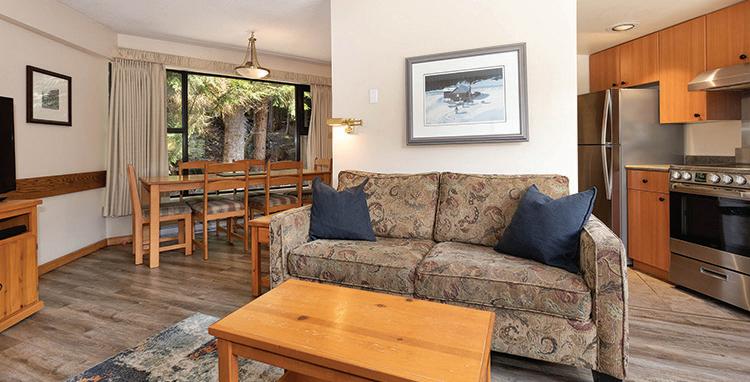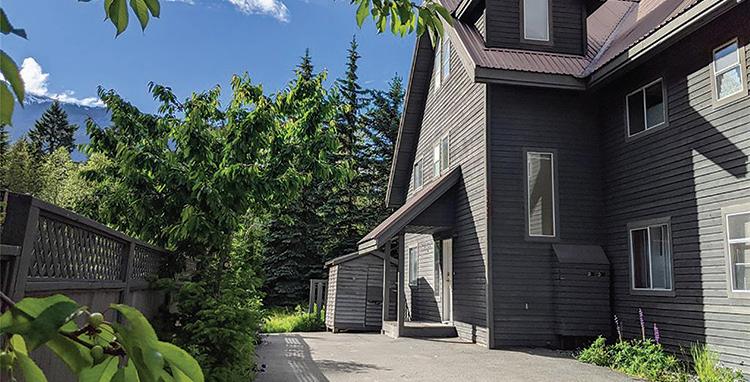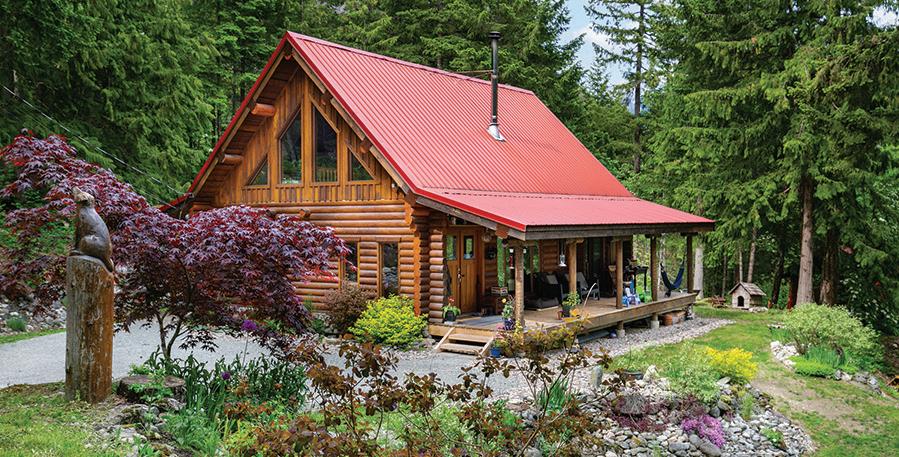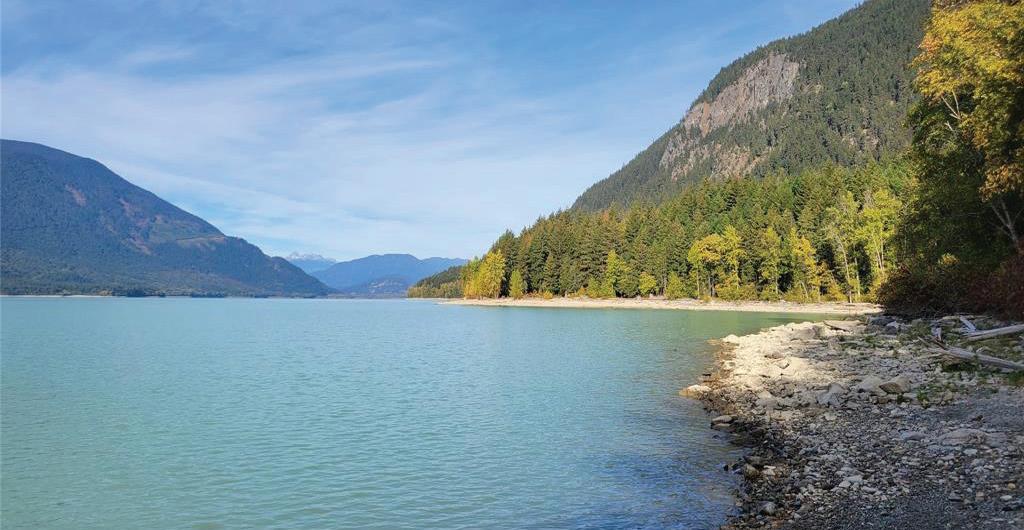
















































































































































































































































































































































































































SPACE FOR RENT The closure of Village 8 Cinemas this month dealt another blow to a sleepy corner of Whistler Village—how can proponents reanimate it?
SERVICE, PLEASE Higher permitting fees at Whistler’s municipal hall will be easier to swallow if it means better service, say local builders. 20 SATISFIED? Whistlerites’ sense of belonging remains strong, while trust in the municipality is at a record low, according to the latest Community Life Survey.
Growth management, environmental stewardship, emergency preparedness and organizational health are the Village of Pemberton’s four main priorities for 2023.
Pemberton mountain bikers Lucas and Tegan Cruz share a unique family connection—and nine podium finishes between them in 2022.

NIGHT
Four years sober, a Whistler writer reflects on how she ditched drinking in a booze-soaked town. - By Veronica Woodruff COVER It’s really easy not to feel like an alcoholic in this town, but if we’re all honest, if you aren’t an alcoholic, you’re probably one of those types who can run a full marathon straight off the couch. Or maybe both!? - By Jon Parris // @jon.parris.art

TOWN Motown on Mondays at The Raven Room offers “something different” to Whistler’s nightlife, says DJ Vinyl Ritchie.
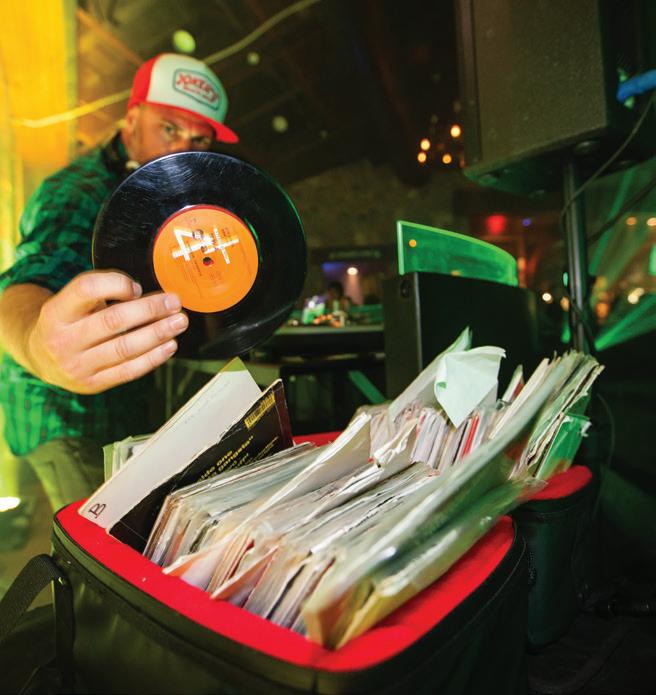
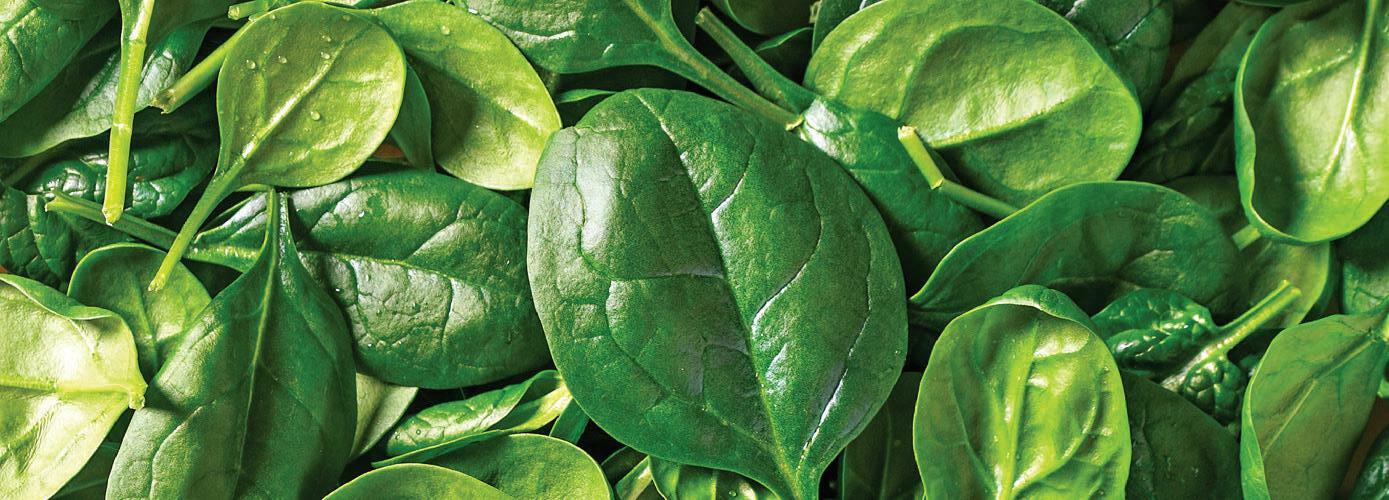


















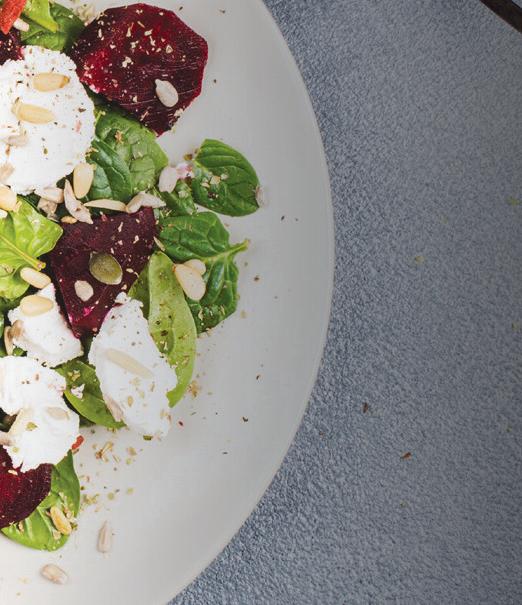














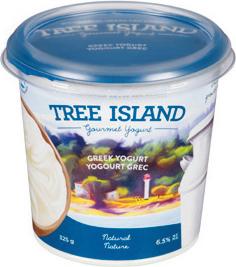








































Founding Publishers KATHY & BOB BARNETT
Publisher SARAH STROTHER - sstrother@wplpmedia.com
Editor BRADEN DUPUIS - bdupuis@piquenewsmagazine.com
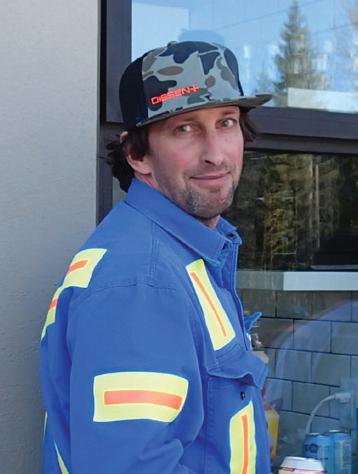
Sales Manager SUSAN HUTCHINSON - shutchinson@wplpmedia.com
Production Manager AMIR SHAHRESTANI - ashahrestani@wplpmedia.com
Art Director JON PARRIS - jparris@wplpmedia.com
TESSA SWEENEY - tsweeney@wplpmedia.com
GEORGIA BUTLER - gbutler@wplpmedia.com
Digital/Sales Coordinator AMELA DIZDARIC - traffic@wplpmedia.com
Production production@piquenewsmagazine.com
Features Editor BRANDON BARRETT - bbarrett@piquenewsmagazine.com
Arts Editor ALYSSA NOEL - arts@piquenewsmagazine.com
Social Media Editor MEGAN LALONDE - mlalonde@piquenewsmagazine.com
BRANDON BARRETT - bbarrett@piquenewsmagazine.com
MEGAN LALONDE - mlalonde@piquenewsmagazine.com
ALYSSA NOEL arts@piquenewsmagazine.com
ROBERT WISLA - rwisla@piquenewsmagazine.com

DAVID SONG - sports@piquenewsmagazine.com
Classifieds and Reception mail@piquenewsmagazine.com
Office and Accounts Manager HEIDI RODE - hrode@wplpmedia.com
Contributors G.D. MAXWELL, GLENDA BARTOSH, LESLIE ANTHONY, ANDREW MITCHELL, ALISON TAYLOR, VINCE SHULEY
President, Whistler Publishing LP
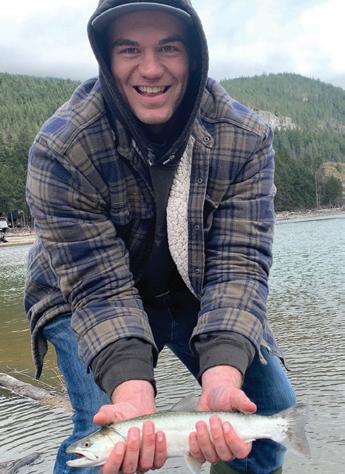
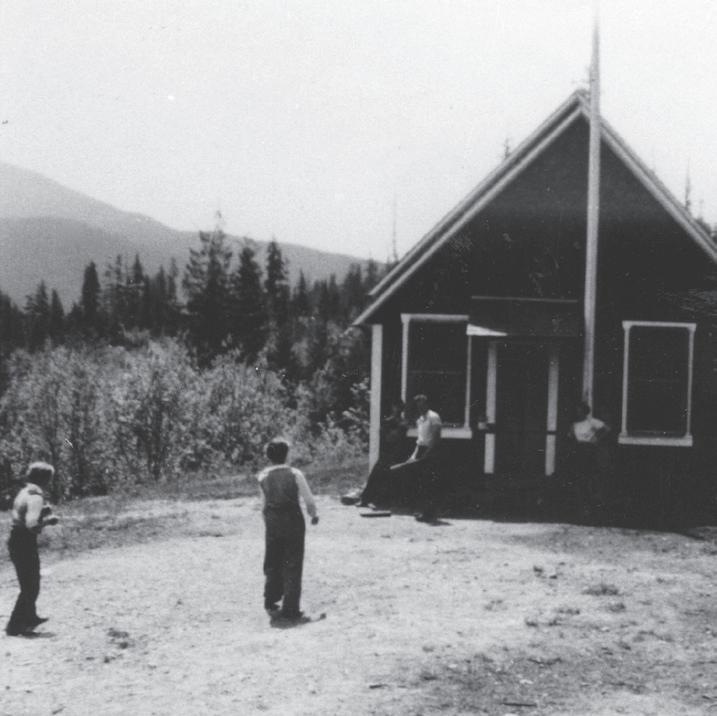
SARAH STROTHER - sstrother@wplpmedia.com
#1206-2022
$76.70/yr. within Canada, $136.60/yr. courier within Canada. $605.80/ yr. courier to USA. GST included. GST Reg. #R139517908. Canadian Publications Mail Product Sales Agreement #40016549.
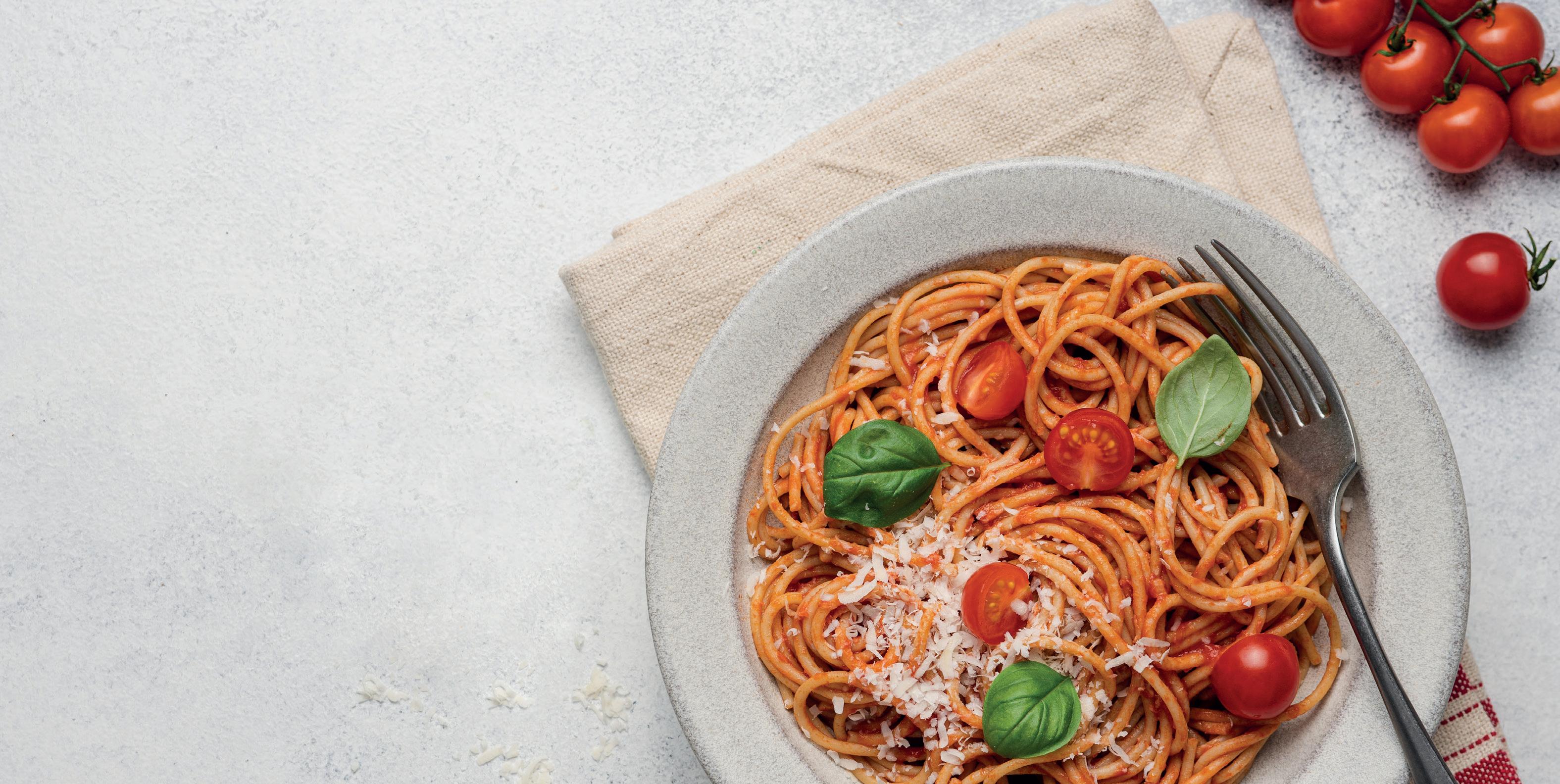

















THE OTHER DAY in the Pique newsroom, I voiced an opinion that could never be printed—at least not in Whistler, with my name attached.

Not because it was obscene or profane, or hate-filled or something like that. It was
 BY BRADEN DUPUIS
BY BRADEN DUPUIS
just an opinion so inconceivable among Whistlerites that I might actually get run out of town if I wrote it down (and I’m only half kidding here).

So we’ll leave that one concealed beneath the ol’ sacred cone of silence, at least for now.



My noxious, unspeakable view may have cleared the room, but it got me reflecting on the role public commentary plays in our modern society.
For centuries, opinion columns and letters to the editor in newspapers have provided readers with a broader understanding of their communities and societies.

Going beyond the daily headlines, opinion pieces (in all of their various forms) are able to provide valuable context, or information missing from news stories. They can sway public opinion, or argue for or against specific points of policy.
They can shine light on issues or events that are otherwise underrepresented in the daily discourse—or they can simply serve to stir the pot.
In this case, there would be no real reason to platform my terrible opinion. It progresses no productive argument for the greater good; probes no serious issue of public concern. The discussion it would create would
be entertaining, for sure, but it would be completely pointless. Sharing my opinion would only serve to make readers mad— controversy for the sake of controversy, the definition of a hot take.
And yet, some morbid, anarchistic part of my brain can’t help but wonder how big the blaze would get if I only lit the match.
I know I’m not alone in that curiosity. In fact, I’m sure most who are reading this are now itching to know what my big dumb opinion is (trust me, you’re not missing out).
In our modern media landscape, hot takes are a dime a dozen. Chances are you’ve encountered three or four through Facebook, Twitter or Instagram—pick your poison, really— today before you came across this article.

The price of cheese keeps going up. Whistler’s side streets need better maintenance. E-bikes are the scourge of the Valley Trail. Nobody knows how to drive properly but me.

the internet is not to ask a question; it’s to post the wrong answer.”
We see something we know to be wrong, and our brains find it hard to resist the urge to engage—click, comment, correct, or maybe just rage.
As an interesting aside, some political opportunists are now leveraging Cunningham’s law to further spread their partisan messages; by producing memes and infographics with obvious spelling and grammar errors, they ensure more clicks, comments and shares. Even if it’s mostly from people making fun of their supposed “incompetence,” the logic is that the core message is still getting out there, and hopefully getting through to potential new voters. It’s subtle, and somewhat slimy—but smart, in a dumb sort of way.

It’s the same logic used by social media provocateurs of all stripes: make outrageous,
followers, likes and shares so directly equates to their societal worth (and in many cases, earning power).
After all, once you plot the course, it’s only a matter of time before it’s a race to the bottom—so it’s really no surprise the tactics of engagement have so steadily devolved.
The customer is always right, and the customer, in this case, wants big, loud, offensive hot takes. Or at least that’s what their clicking habits say.
On a related note, if you’re a hungry, talented writer in Whistler with an axe to grind (and opinions that go beyond hot takes), Pique wants to hear from you.
To steal a phrase from longtime Pique contributor Feet Banks, “where are the young thirsty literary kids salivating to have their voices heard and stir the f@#$ing pot?”
Beats me.
The mediums have evolved, but there’s
Vail Resorts is the literal devil.



Opinions, they say, are like a certain southerly orifice—everyone has them (and they usually stink).



So why do we find the bad ones so irresistible?

Perhaps it has something to do with our own self-superiority, or at least the illusion of it.
Cunningham’s Law, named after Ward Cunningham, the inventor of wiki software, states “the best way to get the right answer on
controversial statement, knowing full well the reaction it will evoke; watch the digital impressions multiply as the offensive hot take provokes reasonable-minded people into denouncing it; watch your influence spread like an invasive species in the ditch.
There’s no such thing as bad press, as the saying goes.
It’s unfortunate that we as a society have decided to put so much weight behind supposed “influence”; that one’s number of
still room in traditional media for those thirsty literary kids.
So—what’s grinding your gears lately?
Maybe some day I’ll write down my own unspeakable opinion and share it with Pique’s readership—after I’ve announced my retirement, packed my things and secured my plane ticket out of here.
Or maybe I’ll include it in my will, to be read aloud at my funeral. Probably the safest bet, to be honest. ■

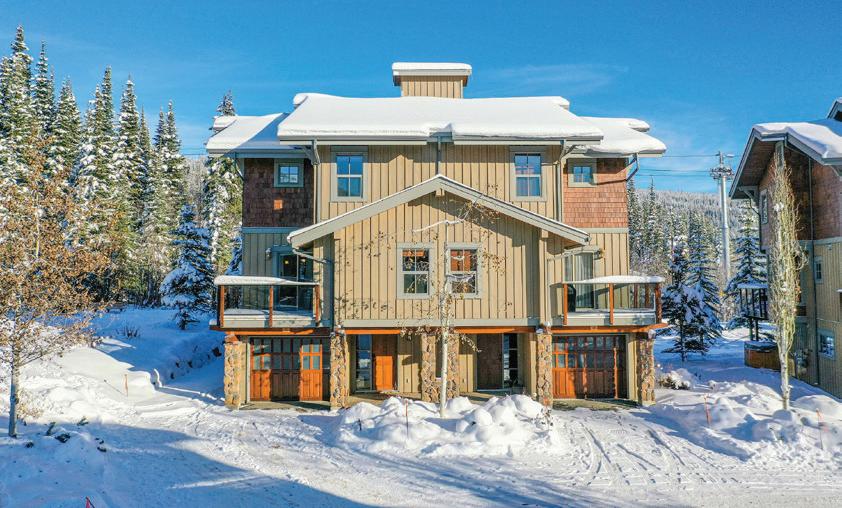
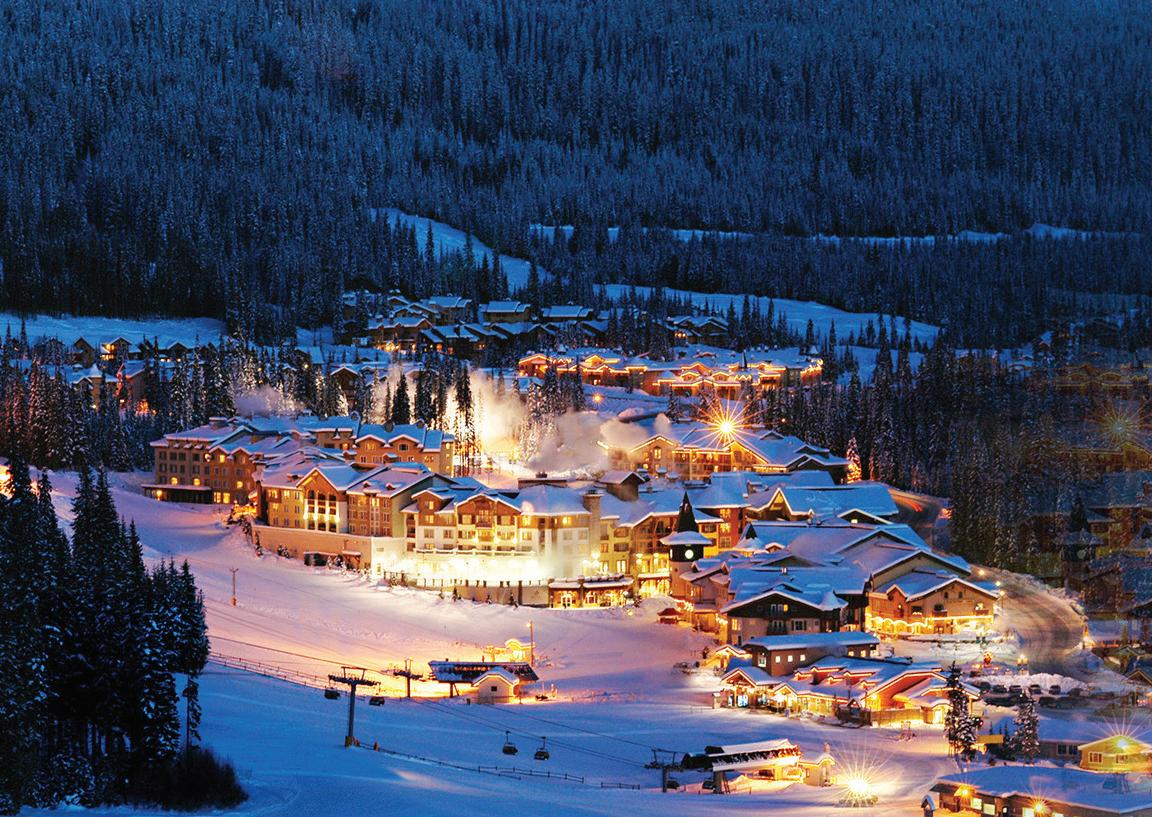

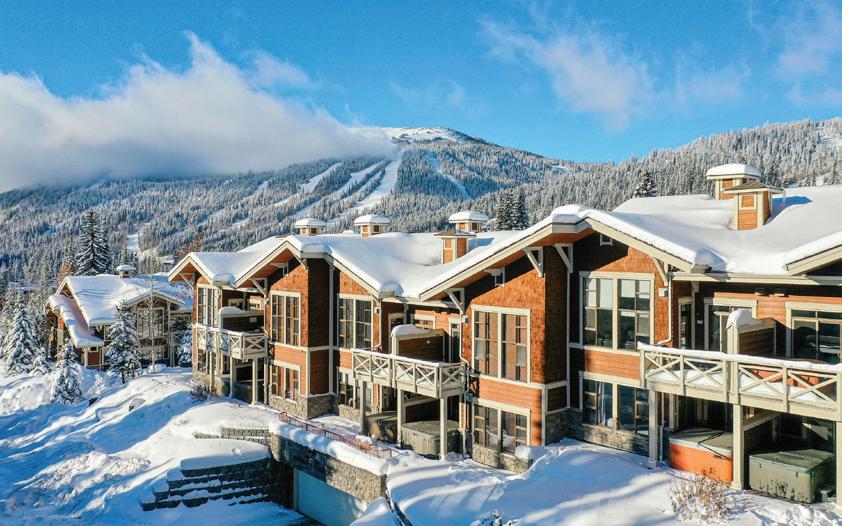
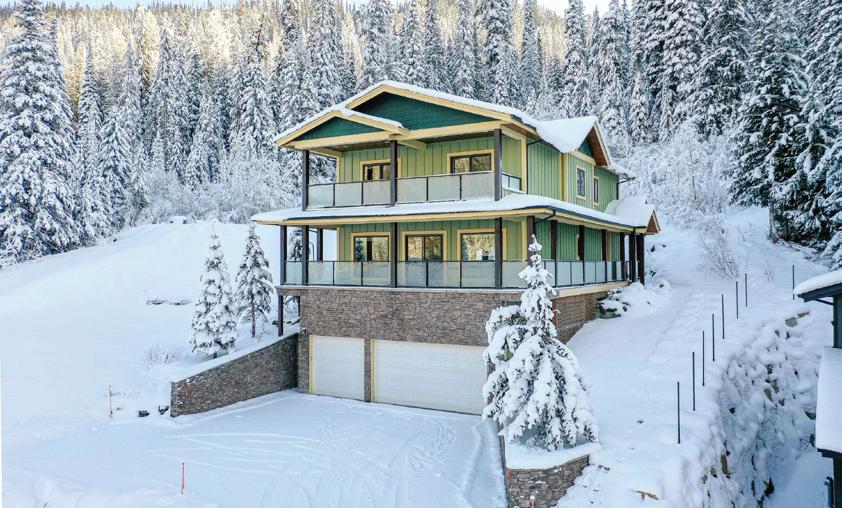

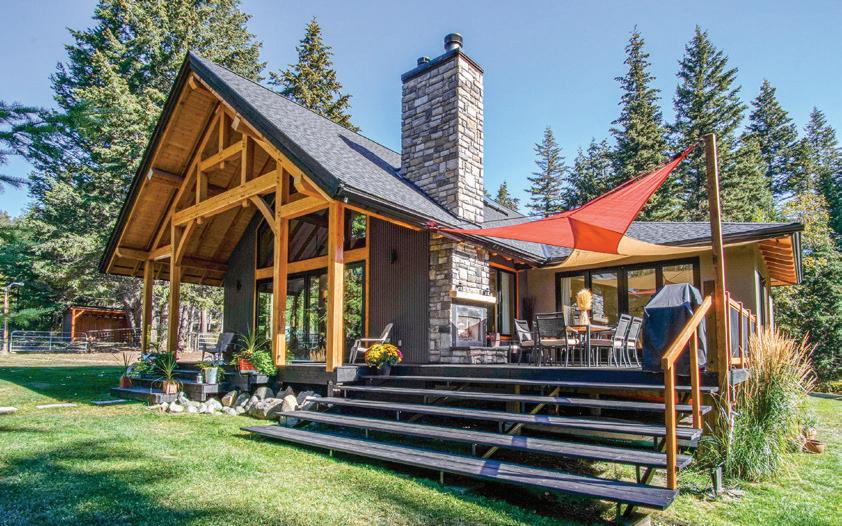





Thank you Al Whitney for your out-of-the-box idea (“Letter: A simple solution for Highway 99 congestion in Whistler,” Pique, Jan. 3) to open up the “third lane” on Highway 99— used during the 2010 Olympics—to allow for alternating two-lane traffic to alleviate Whistler’s congestion woes.
Without getting into all the cone-shifting complexities, the idea that there is an unused existing third lane between Function Junction and Lorimer Road is definitely worth exploring.
But not in more private vehicles.
Unfortunately, Mr. Whitney falls victim to the prevailing orthodoxy that adding road capacity will reduce congestion. In the short run it does, but it also encourages more car travel, which eventually brings back congestion, only with far more vehicles on the road. (Moving vehicles emit far more pollution and GHGs than idling ones, BTW). This is called induced demand. Not smart.
Further, adding more cars runs exactly counter to the province’s goal of a 30-per-cent reduction in vehicle-kilometres travelled by 2030—or about two per cent a year—and
the Resort Municipality of Whistler’s climate change targets.

In the interests of not letting the perfect be the enemy of the good, let me suggest an amendment to Mr. Whitney’s idea (presumably one already on some traffic planner’s radar): yes, open up the third lane, but think about moving people, not cars.
Reserve it for buses, shuttles, taxis, e-bikes and bicycles (enforcing a 1.5-metre safe passing distance between vehicles and bicycles).
Cars and trucks would still have the same
road space they do now.
And yes, admittedly, without Mr. Whitney’s daily traffic cone choreography, the third lane would only relieve congestion in one direction, say southbound. But isn’t that 50-per-cent better than no relief at all?
It’s well-known that improving speed, frequency and reliability of transit attracts riders. A bus lane, even if it’s only going in one direction, would get some people out of their cars, perhaps enough to take enough local traffic off the road to significantly speed up car
travel in both directions.
A semi-protected bike lane, direct and efficient, would definitely attract bike riders, particularly from the growing ranks of e-bike and e-cargo bike owners, also replacing car trips. (No doubt Valley Trail walkers would be happy to see speeding commuter cyclists diverted to the highway.)
To those who think cycling is a three-month mode, cyclists in Copenhagen roll right through winters colder than Whistler’s, because it’s a convenient and safe way to get around and cycle routes are plowed and sanded regularly.
Removing a small number of vehicles can have a disproportionately positive impact on speeding up traffic flow.
A new transit/bike lane—even just in one direction—might just do that, while indisputably reducing pollution, GHGs, traffic accidents and commuter fuel costs, enhancing the convenience, affordability and financial feasibility of transit, and adding the health and happiness that come with cycling.
And if someone can figure out the daily traffic cone dance and traffic light coordination suggested by Mr. Whitney, let’s do that too!
Peter Ladner // Whistler
First, to let you know, I don’t like writing letters to the editor, but this has been building and festering in me for awhile and I need to get it out.



Townhouse with great ski hill access, quiet location with trees and mountain views located just minutes from the ski hill. The cozy interior features an updated kitchen, wide plank hardwood floors, one bedroom, one bath and vaulted ceilings in the main living area Convenient access to all the wonderful amenities Whistler Creekside has to offer; the Creekside Gondola, restaurants, hiking, biking, Alpha and Nita lakes and the Valley Trail system. Us e it as your Whistler getaway, for full time living, or create great revenue. Phase 1 zoning allows for unlimited owner use or nightly rentals
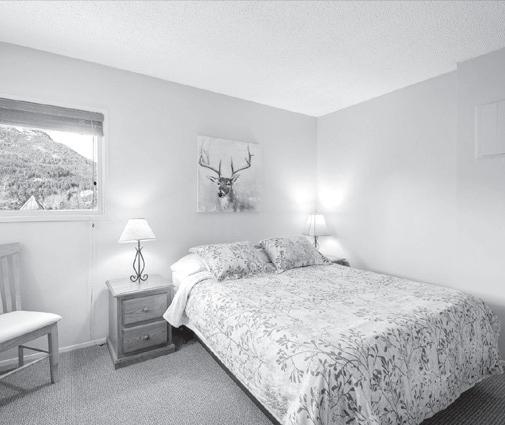
I first started skiing here in the ’60s. My favourite place to ski in the beginning was the T-bar on Glacier Bowl. I spent a lot of time there while my dad and older brother would ski the whole mountain. One thing that made me happy is that even back then, in the springtime there was a hot dog stand at the bottom of

But just having all this natural wonder would not make it into the No. 1 ski resort in North America. It takes people to do that, and in my opinion we had the best ski people in the industry.
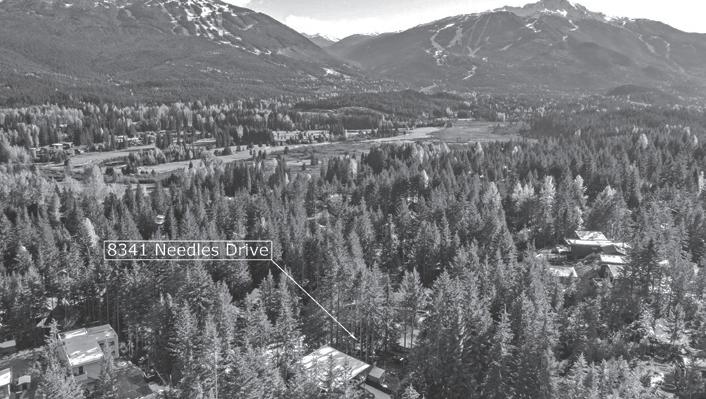
There are too many names to mention, but here’s some: Wilhelmsen, Raine, McConkey,




 - KEN MASON
- KEN MASON
the T-bar where you could get a good hot dog, drinks, chocolate bars and the like. Life was great, and I was hooked on skiing, Whistler Mountain and Alta Lake, Whistler.


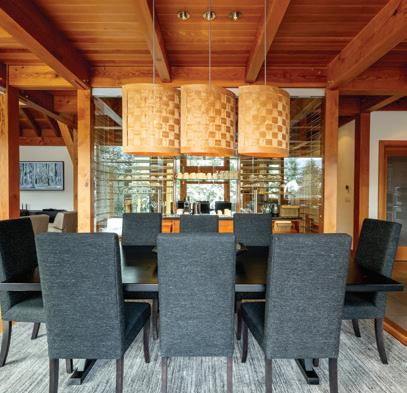
Since the early days of a few lifts and runs, Whistler, now Whistler Blackcomb (WB), has become one of the largest ski resorts in the world. I have taken much pride in this, as from an early age I knew the potential of Whistler. Whistler started with the best terrain in North America, and just the sheer vastness of it all and its natural beauty, along with our most precious lakes, make it a Canadian jewel.
Smythe, Vogler, Boyd, DuFour, Forsythe, Brownlie. Al Raine and Dave Brownlie are both from my hometown of Burnaby. Two good B.C. boys, and the others mostly Canadians, but all who put skiers first and took pride in providing the best ski experience to all.
For those ski industry leaders and visionaries to make WB into the No. 1 resort in North America indicated by U.S. ski magazines was an even bigger accomplishment considering WB is a Canadian resort beating out top U.S. resorts.

Fast-forward to the takeover of WB by
AS OF TUESDAY, JAN. 10
Almost tropical…
A major storm is expected to impact the region beginning on Thursday. It will bring moderate to heavy snowfall over the coastal mountain ranges. The strong flow of warm, moist air will be coming from the Pacific Ocean and will bring a mixed bag of precipitation as freezing levels rise to 1,800-2,000 metres over the weekend. Although this subtropical flow may not become a fully fledged atmospheric river (or Pineapple Express), it will definitely be a little tropical.
There is some uncertainty regarding the total amount of precipitation the storm will bring (likely between 45-70 millimetres), but heavy rain at lower elevations and wet snow at mid elevations are certain. Only the higher elevations may see drier snow. Strong-to-extreme southerly winds will also be in play. Avalanche hazard will remain elevated throughout the storm and immediately afterwards.
elevations, with natural, loose, wet avalanches possible on steep slopes. In places where the precipitation is falling as snow, you can expect to find cohesive and touchy storm slabs. Cornices will also be growing throughout the storm and may be prone to failure as temperatures rise. With the potential for large, natural avalanches and for avalanches to run all the way down to a thick crust buried in the snowpack, it will be a spicy time to be in the mountains!

Challenging conditions require patience and a conservative approach to avalanche terrain. This is a good weekend to stay within the ski resort boundaries and enjoy the fresh snow on your favorite in-bounds runs. Even when the storm ends, the potential for human-triggered slab avalanches will remain. After an intense storm like this one, the snowpack needs time to heal and gain strength. If you do head into the backcountry, the best course of action will be sticking to low-angle or non-avalanche terrain and avoiding overhead hazards. n CONDITIONS
Expect to find slushy snow at lower and mid
into the

available at 604-938-7676, or surf to www.whistlerblackcomb.com/mountain-info/ snow-report#backcountry or go to www.avalanche.ca.
Write to us! Letters to the editor must contain the writer’s name, address and a daytime telephone number. Maximum length is 450 words. Pique Newsmagazine reserves the right to edit, condense or refrain from publishing any contribution. Letters reflect the opinion of the writer and not that of Pique Newsmagazine GOT GOOD VIBES TO SHARE? Send them to goodnews@piquenewsmagazine.com
“[J]ust having all this natural wonder would not make it into the No. 1 ski resort in North America. It takes people to do that...”





Vail Resorts. From the first I heard of it, I had concerns, and was saddened that a great Canadian icon was being taken over by a U.S. company. I wasn’t drinking the Kool-Aid that Americans can run things better. In fact, I knew it would be quite the opposite, and it has been.
The downfall started almost immediately by slowly but steadily increasing the cost of food. I rarely go into mountain restaurants now. The quality and selection and pricing are, quite frankly, disgraceful. There used to be a great selection of freshly baked goods, great soups and pasta and gourmet sandwiches. I recently saw someone with a hamburger they bought on-mountain, and it looked like hospital food at best—and I understand a hamburger and fries is $30! That’s outrageous.
Then there’s the grooming, which has suffered greatly under Vail Resorts’ ownership. So many good runs are not being groomed regularly or at all, like Peak to Creek (which was previously groomed twice per week), Bear Paw, Tokum, Lower Franz and now even upper Dave Murray. There are long lift lines, lifts stopping constantly, late opening of alpine lifts, rarely opening T-Bars, poor communication, no communication, useless apps (especially for weather), no soap in the bathrooms … The list goes on and on and keeps growing. Basically, it feels as if Vail is trying to wring every last nickel out of the resort while providing the very minimum in return. I don’t believe Vail Resorts is run by ski people—or at least not B.C. ski people. It is an investment company,
taking our money up front and investing that for its return. And just to be clear, none of this is directed at staff, as I think they are doing a remarkable job under the circumstances.
It’s shameful how Vail Resorts has hollowed out our great resort. I used to have so much pride and connection to our hometown hill, and now I’m losing it and feel Whistler is becoming just another corporate town. I don’t even know who any of the local Vail Resorts executives are, let alone know what they look like. I used to see Smythe, Brownlie, Forsythe, Dufour and others all the time working the lines or helping out with whatever needed to be done.

Change is inevitable, and good change is always welcome, but Vail Resorts is destroying the soul of WB. It’s so sad to see all the things we used to have now gone, such as the hot dog stand, outdoor barbecues, bands playing up top, amateur competitions, special events, etc.

As the saying goes, you don’t know what you got until it’s gone. I wish we could go back to Canadian ownership and management, but that’s a pipe dream. At least the mountain is still the mountain, and we are still surrounded by natural beauty.
Thanks to all who made WB what it was. It was a great ride and I’m grateful I was there from the beginning to experience it. I hope this doesn’t happen to our other great B.C. ski resorts. My word of advice to these resorts? If you see something shiny being dangled in front of you, don’t believe what they’re selling.
 Ken Mason // Whistler n
Ken Mason // Whistler n




WHILE IT WAS NICE, sort of, to see visitors come back in historical high numbers after two years of COVID Christmases, the inevitable traffic jams served as a reminder that absolutely nothing has been done to improve the highway situation.
This is a buck that has been passed to the moon and back. All kinds of solutions have been proposed but nothing ever seems
BY ANDREW MITCHELL
to happen, while in some cases the Ministry of Transportation has actually dug in its heels to keep our miserable status quo.
The situation is this: Whistler has one main road—one way in and, at peak times, no way out. It’s just two lanes through the resort, for the most part, with the exception of extra southbound lanes at Village Gate and Creekside that seem to cause as much traffic as they alleviate—and at non-peak times tend to get used as hazardous righthand passing lanes instead of merge lanes.
One proposal would add a third lane that alternates direction according to traffic patterns, similar to the stretch of road between Park Georgia and the Lions Gate
Bridge. In the morning there would be two lanes heading north—one of which could be reserved for carpooling and transit if that’s what we’re pushing for—and in the evenings there could be two lanes heading south to the highway.
Having more lanes worked well during the Olympics, and that stretch of highway has already been widened accordingly, but for some reason the idea of making this option permanent has gone nowhere. The lack of progress is making life a lot harder for thousands of locals—including locals taking transit who end up mired in the same traffic nightmare.
All those new housing units in Cheakamus Crossing are pretty great—for anybody who doesn’t need to go north in the morning or make it home on a Sunday afternoon in less than an hour. By building up that neighbourhood, we’re also adding hundreds of cars to our local traffic during rush-hour periods, which further complicates matters for people in three forgotten neighbourhoods that rely on increasingly rare gaps in traffic to safely pull out.
The three southern neighbourhoods that don’t have traffic lights are Brio, Nordic and Spring Creek. At certain times of day it can take five minutes or more for a gap that allows you to turn left onto the highway.
I live in Spring Creek, and my current record wait to make a left turn is eight minutes. The longest it has taken me to
drive to the village was almost an hour, and it once took an hour and a half to make it home—a distance of just over seven kilometres.
Adding traffic lights at Spring Creek is impossible while the highway speed limit remains at 80 km/h, but even if the speed was lowered it still wouldn’t be considered, because lights create more traffic and, more importantly, there’s an issue stopping vehicles on hills in slippery conditions. People who live in that neighbourhood or drop their kids off at the school could really use either a traffic circle or a dedicated pull-out southbound lane so they can pull out partway when there’s a northbound gap. And slower traffic.
The municipality, and myself, have petitioned the province for years to lower the speed limit to 60 km/h from south of Creekside to Function Junction, but with no success. Apparently the province is comfortable with that speed limit, regardless of how curvy, hilly, or popular the highway is with cyclists. They don’t care that there’s a school and firehall, or that drivers turning left out of Spring Creek can’t see that far up the road. You have a window of about four seconds before the car that appears over the hill is on your bumper.
The speed limit is a more reasonable 60 km/h at Nordic, but otherwise the situation is identical—both entrances are located on hills where vehicles are already


prone to spinning out and traffic lights are impossible. At least one traffic circle or pullout lane for that neighbourhood would be a huge help.
Brio? It’s flat, and a traffic light could be feasible, although I doubt it would be considered because it would add to congestion near the village to stop vehicles in that area. Again, a traffic circle or pull-out lane is the most reasonable alternative.
Traffic circles (also known as roundabouts) are incredibly common in Europe, where entire cities get by with fewer traffic lights than Whistler, but for some reason they never really got a fair shake here. I get it—there are a lot of terrible drivers on our roads that would struggle at first, but circles really do work when it comes to keeping traffic moving.
A third lane and circles—or pull-out lanes if we can’t be trusted with circles— would go a long way to helping people drive in and out of the resort, speed up our transit system, and improve the lives of everyone here. And yet, again, nothing is happening. It’s embarrassing.
At the very least, it’s time to look seriously at night skiing, which would help stagger times that skiers arrive and depart on weekends. Adding upload capacity is a great idea, but changing the way people use the mountains, while creating something to do in the evenings, will do wonders for our traffic situation. n


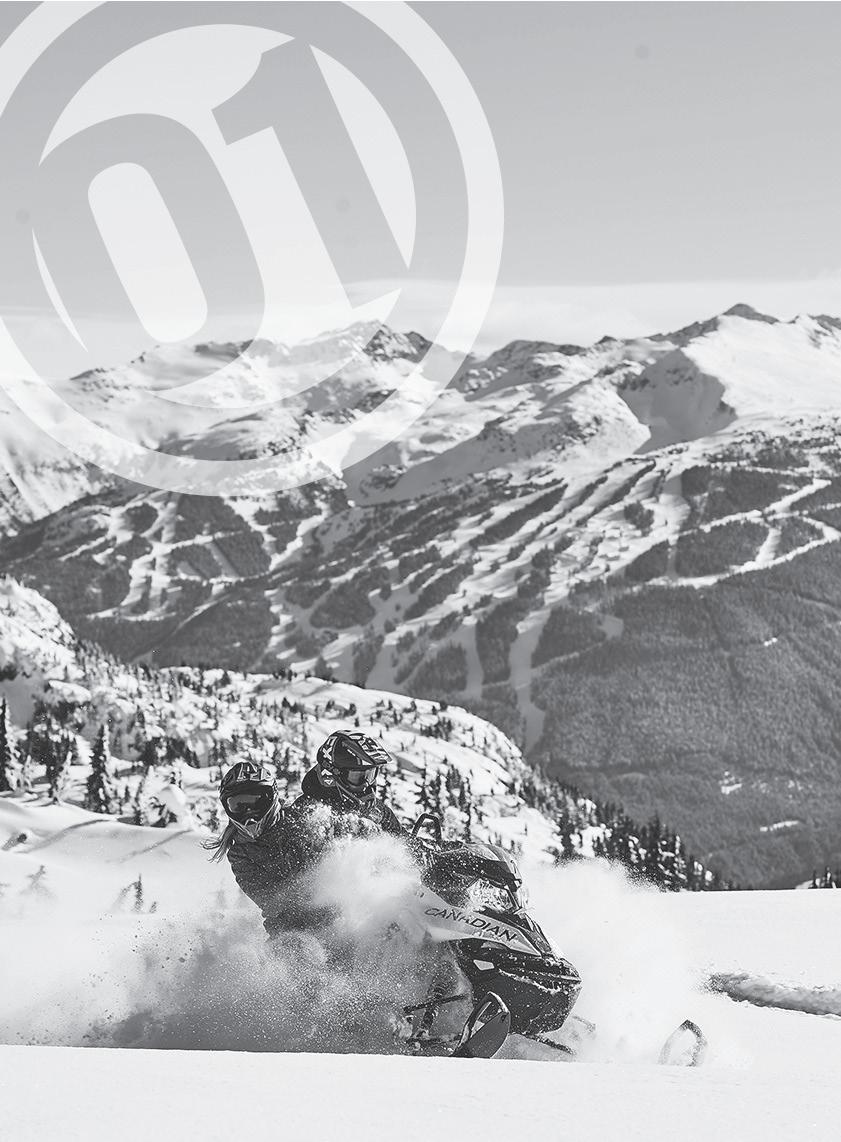

IT’S VILLAGE 8 Cinemas last night in operation, and Brad Nichols has a decision to make: Whitney Houston biopic or Puss in Boots: The Last Wish?

“Everything else is sold out,” he said, resigned to his fate.
For the Whistler Museum director and film buff, Thursday, Jan. 5 marked the last chance to take in a movie at the local cinema—something he and his partner have done on a near-weekly basis for the past eight years—before it shuttered its doors for good.
“It was just a great activity. Hopefully someone picks up the torch and keeps going with it,” Nichols said. “It’s that kind of communal experience that there’s not a lot of left in Whistler.”
Imagine Cinemas confirmed last month it would close the resort’s lone movie theatre on Jan. 6, which the Ontario company has operated since 2015, when it took over from L.A.-based Metropolitan Theatres.
Citing challenges around staffing, employee housing, and difficulties managing a theatre from three time zones away, Imagine Cinemas COO Gina Facca told Pique last
month that the company had “exhausted all of our ideas on how to make this work.”
Losing the only cinema for miles around is another blow to an entertainment-starved sports town that already had a relative lack of weather-independent offerings before Village 8 announced its closure.
“The fact that we’re losing one of the only things you can do here besides drink is a little upsetting,” said Connor, who was visiting Village 8 for the first (and last) time
alley, games, restaurant and bar—operated out of the underground space where Village 8 now sits. (The cinema takes up a portion of the space that AlpenRock operated out of.)
In a sign of some of the challenges to befall Village 8, the AlpenRock was “plagued by licensing and zoning issues, high staff turnover—even theft,” according to a 2001 Pique article detailing how the property’s owner, West Vancouver-based Larco Investments, had seized the space from
partnerships and development. “We want to lease the space as much as people want to see it leased. But it comes back to: how do we find the right operator for the narrow parameters of the zoning?”
Calling the current zoning “overly prescriptive,” Amantea said it has been difficult finding a concept that would align with the space’s list of permitted uses, which include a movie theatre, restaurant and indoor recreation, as well as for entertainment purposes, as long as at least 50 per cent of the gross floor area within the strata lot is dedicated for a hotel or auxiliary use.
“The long and short of it is, if there are operators out there that can find a way to make it work, we’re happy to talk to them about it,” he said. “Beyond that, we’re going to have to sit down and have a real candid conversation with the municipality to do something with the zoning and make the space more viable.”
on Thursday night (and who declined to give his last name). “I always thought there should be a bowling alley here. I feel like it would do really well.”
Connor is, of course, not the first to think a bowling alley would be a good fit for that corner of the village.
For a handful of years around the turn of the millennium, the AlpenRock—an entertainment facility containing a bowling
AlpenRock’s parent company, MagiCorp Entertainment Inc., over unpaid rent.
At the time, a Larco representative told Pique the real estate investment firm was hopeful to reopen the space “very soon,” with several interested parties waiting in the wings. Twenty years later, and, aside from the cinema, the space has sat vacant ever since.
“We continue to look at other options,” said Rick Amantea, Larco’s VP of community
Larco did have a concept it was in favour of back in 2018, when National Beerhall Inc., a division of Calgary-based Concorde Entertainment Group, proposed a 616-seat bowling alley, game centre, restaurant, lounge and patio across two levels. While the concept drew mostly positive reactions from locals, both elected officials and the resort’s bar and restaurant sector sounded alarm bells over the project’s size and scope, leading to questions of where the proponents would find and house the dozens of staff the business would require.
More recently, Amantea said Larco
END SCENE WIth this month’s closure of Village 8 Cinemas, property owner Larco Investments is tasked with filling 33,000 square feet in the heart of the village—for the right concept. PHOTO BY BRADEN DUPUIS“Someone coming from out of town who doesn’t know the marketplace, they would just be taking a swing for the fences. People just aren’t doing that these days.”
- JEFF MURL
entertained a concept that he described as “a combination retail-experiential space” for the vacant upper level as well as a portion of the lower level that ultimately fell through when COVID-19 hit in early 2020.

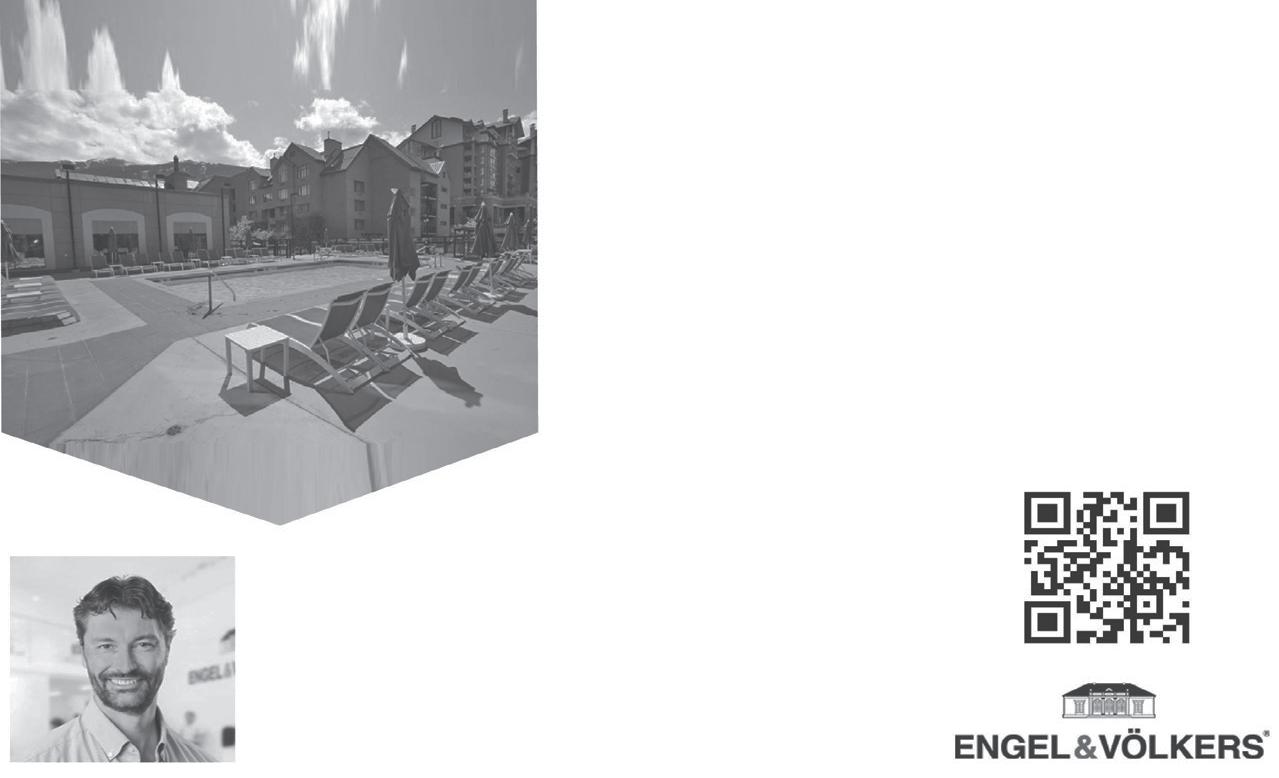

“It was something we were very bullish on and felt in many ways would be something that the skiing, snowboarding, cycling and hiking market would find a very cool operation,” he noted. “The world being what it is, it just didn’t come together.”
tenant isn’t likely to happen in the short term.
“We need some patience in terms of how and if we can either repurpose the space and/or find the right operator to maybe do a portion or all of the cinema space as an ongoing operator, but deals of this size and intricacies don’t happen overnight and we just have to put our heads down and work with the municipality, work with the community and work with operators to see if any of this makes sense,” he said, noting it is Larco’s preference to deal with one tenant for the entire space, but it is open to dual tenancy for the right project.


That particular corner of Whistler Village, known officially as Village Common, has proven a difficult zone to animate in recent years, even before the pandemic arrived. In late 2019, the Blackcomb Way Starbucks announced it was closing, adding another vacancy to the already sparsely populated commercial area. A handful of other businesses have since come and gone from Village Common, and by and large, retailers have indicated high rental rates don’t reflect the level of foot traffic the area gets. “I think businesses would go in there if the lease rate properly reflected the store traffic, but I think that landlord wants to get [Village] Stroll rates in there,” said Rene Gauthier in 2019, founder of ecologyst (formerly Sitka), which rented a space from Larco next to Village 8 for a time.
“It’s an issue across B.C., across Canada, where landlords don’t want their rates to drop because then they can’t borrow as much money against that property. They’re incentivized to have nobody in there rather than see their lease rate drop because all of a sudden their borrowing power drops with that.”

For his part, Amantea said Larco is keen to fill the space, but added that finding the right
Whatever the right concept is, it is clear Larco—one of Canada’s largest and deepestpocketed private real estate firms—is willing to sit on the space, as it has for more than two decades, even if it means losing money (Amantea would not say how much the company has spent on the vacant space over the years).
Village Common “likely needs a key tenant that can attract customers to that zone,” posited Whistler Chamber of Commerce executive director Louise Walker. “Do I know what that is? I don’t. It’s an interesting spot because there’s a really great plaza there that a good tenant could make use of.”
In considering an anchor tenant that could take over the entire 33,000-sq.-ft. space, Councillor Jeff Murl said a project of that size would be “unique” for the village and would present significant risk to a proponent.
“Someone would have to take a big chance on that and risk a lot of money to see if that kind of concept would work. Because that’s what it is, a shot in the dark,” he said. “I don’t see a lot of local operators in a position to take that on. Someone coming from out of town who doesn’t know the marketplace, they would just be taking a swing for the fences. People just aren’t doing that these days.” n



 RESORT MUNICIPALITY OF WHISTLER LAND
BY ROBERT WISLA
RESORT MUNICIPALITY OF WHISTLER LAND
BY ROBERT WISLA
HIGHER PERMITTING FEES at Whistler’s municipal hall won’t be so hard to swallow if they lead to better service and shorter wait times, according to builders in the resort.

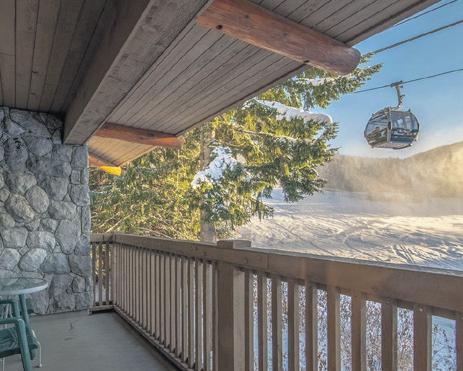
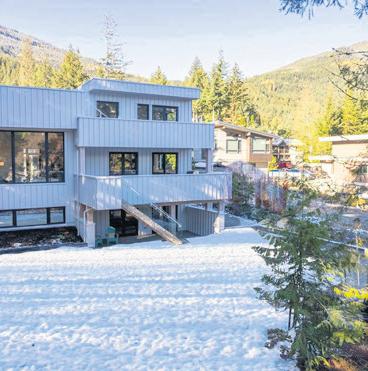
On Jan. 10, Whistler’s mayor and council approved amendments to the Resort Municipality of Whistler’s (RMOW) Land Use and Procedures Bylaw that increase fees for things like development applications, development variance permits and temporary use permits.
The new fee structure also aims to improve transparency and consider the staff time required in all departments rather than just the building and planning departments, according to the RMOW.
The municipality has not raised the fees for a decade, and the amended bylaw aims to bring the costs in line with current expenses. The updated bylaw is Part 2 of an ongoing initiative by the RMOW to reduce red tape, improve wait times and get cost recovery in line with staff costs so that taxpayers are not subsidizing permits.
The new invoice structure will also result in marginal permitting time savings for the municipality. However, the primary purpose of the increased fees is to better account for
the total staff time required for the review and processing of each application.

According to the RMOW, the Local Government Act requires that fees related to applications and inspections not exceed the estimated average costs of processing,
inspection, advertising and administration associated with the applications.





The amended bylaw will also help improve certainty on how much a permit will cost applicants and improve cost recovery for the RMOW.
The increased fees have resulted in some mixed opinions from local builders, though the general feeling is most are on board with paying more if processes speed up.


Bob Deeks, owner of RDC Fine Homes, believes that if the increased fees help reduce permitting wait times, he is OK with paying the extra money, as past permitting delays have resulted in significant project cost increases.
“Essentially, what the bylaws are doing is charging more money for development permits, covenant modifications, and temporary use permits, and hoping to streamline this so it gives them more money for either better staff or more staff, from what I can gather,” Deeks said.
“So in the end, if the process improves, then even though the fees have gone up, in the long run, it saves everybody money because it brings more certainty to the process.”
Deeks added that he hopes the changes bring more certainty for development permits in particular, “because development permits were at 10 months last year, which is a huge hurdle in terms of just trying to get things moving if you have a project that you’re trying to develop,” he said.

Former Sea to Sky Home Builders


Association president and owner of Ario Construction, Chris Addario, shares Deeks’ view, and generally favours fee increases if services also increase.
“If the fees are gonna go up, we want to see an increase in services, and I think that’s across the board. People just want value for their money, and I think that’s fair,” Addario said.
“I think there’s an expectation that if you’re going to [raise fees], you have to increase your services, because currently, the reality is that the municipality has been struggling with turning permits around quickly, development permits and building permits.”
Under the new bylaw, temporary use permit applications rose from a baseline fee of $240 (plus staff time, legal services, and advertising) to a $3,000 flat fee if delegated and $4,700 if they require council permission to proceed.
Meanwhile, amendments to zoning bylaws or land use contracts will go from a base fee of $1,500-plus to one of two massive base fees: $15,000 for applications related to density changes below 465 square metres and $30,000 for density changes above that threshold.
Developer Rod Nadeau, founder of Innovation Building Group, said he wants to see the RMOW decrease wait times for minor permit applications like renovations and house permits.
“This only seems to try and justify very large fee increases and make the RMOW accounting process easier for them,” Nadeau said in an emailed statement.
“I would prefer to see a maximum wait time of three days for a minor renovation permit and three weeks for a house permit. That would be more in keeping with providing
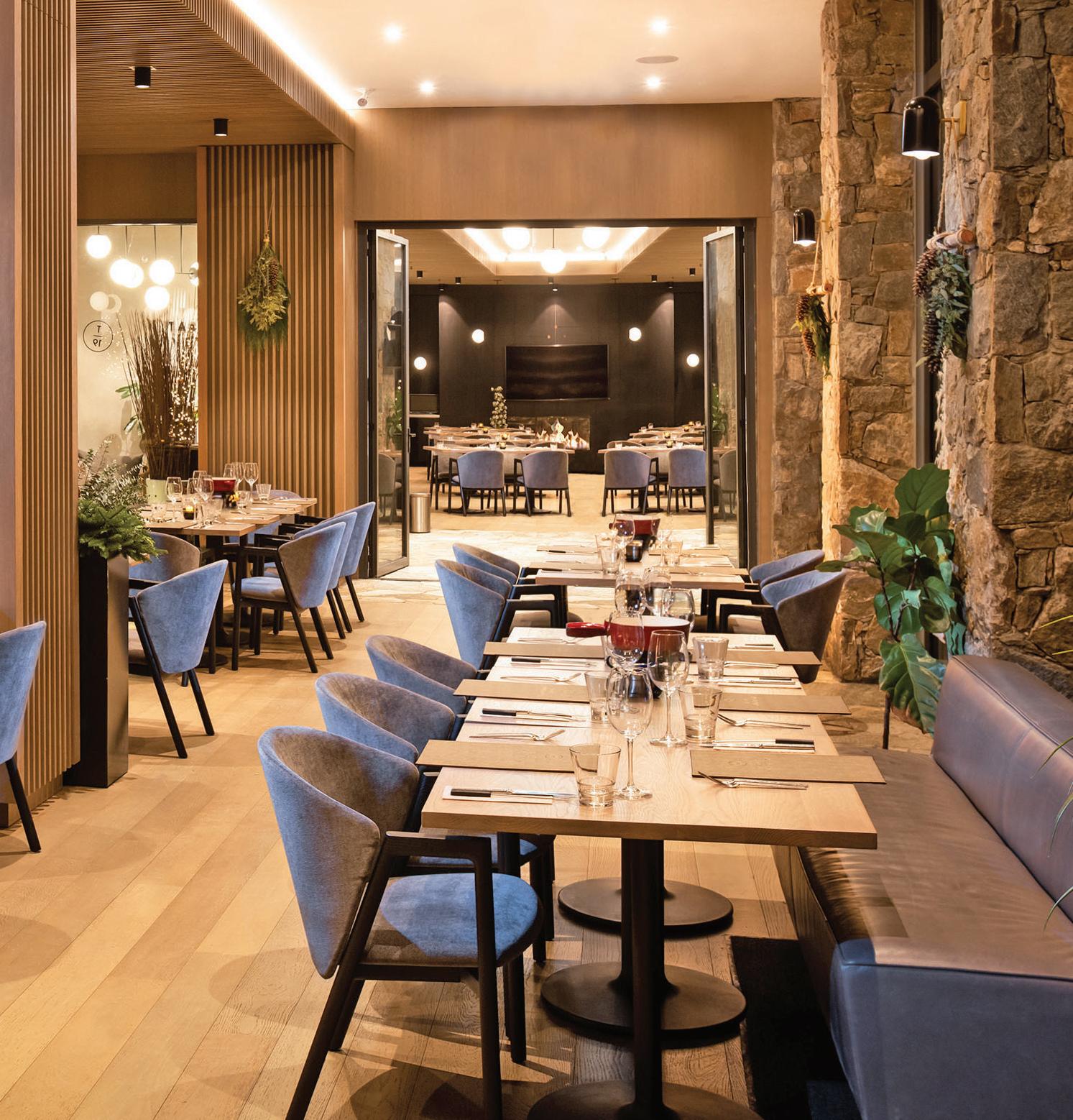
better service as opposed to simply charging more for an inefficient system.”

As a result of the 2021 cyber attack, the pandemic, staffing shortages, and a surge in permitting applications, a perfect storm created a significant lag in permit approval times at the RMOW.
At its peak in August 2021, more than
230 building and 52 development permit applications were in the queue, resulting in dozens of delayed projects. Add in rapidly rising inflation, and construction costs on many projects skyrocketed. Since then, Whistler’s permitting approval time has improved considerably.
In early October, the RMOW adopted new permitting processes made possible by provincial legislative changes. Some permits, such as development variance permits, are now delegated to staff and no longer require presentations to council.
Throughout 2022, the municipality processed 341 building permit applications and approved 281 permits (as of Dec. 8).
- CHRIS ADDARIOThe current initial review for building permits as of Jan. 8 is six months for multifamily/commercial developments, four months for single-family and duplexes, and one month for stand-alone plumbing applications. n
LOCAL FIRE CREWS contended with a year-end blaze late last month that caused extensive damage to a Whistler Road home, according to Whistler’s fire chief.
Chief Thomas Doherty told Pique this week that firefighters were dispatched to a structure fire at 2632 Whistler Road on the evening of Sunday, Dec. 29. When crews arrived on scene, smoke was already billowing from the threestory home, and an occupant met firefighters outside. Fire personnel also safely retrieved another occupant from inside the house, who
was initially unaccounted for when crews arrived. Paramedics also attended the scene and treated the individual for smoke inhalation.
The house sustained “significant damage to the structure of the wall and the roof,” as well as smoke and water damage throughout, Doherty said.
Whistler’s fire chief said the fire appeared to start on the main level of the home, and was likely caused by a wood stove.
About 20 firefighters attended the scene, quickly containing the blaze.
“We worked on just getting access to the fire that was hidden in the walls and up the tin roof area, too,” Doherty explained. “It took a bit of work but we were able to supress the fire and contain it to just those areas.”
The homeowner had working smoke alarms in place, which Doherty said is not always the case.
“I stress that everyone ensure they have a working fire alarm inside their home,” he advised.
- By Brandon Barrett n“If
*O f fe r a p p i e s to re g u a r p ri c e of a TELU S S m a r t H o m e S e c u ri t y (“ S H S ”) p a n s exc u d i n g S m a r t C a m e ra S H S p l a n s re q u i re e i th e r a 3 -ye a r o r 5 -ye a r te rm , exc e pt S m a r t C a m e ra a n d S m a r t Au to m ati o n Pl u s p l a n s w h i c h o n y q u a f y fo r a 3 -ye a r te rm Ava a b l e to ex i s ti n g TELU S o r Ko o d o M o b i t y p o s t- p a i d c o n s u m e r c u s to m e r s w h o a re a l s o s u b s c ri b e d to at l e a s t 1 TELU S re s d e nti a s e r v c e a n d h ave n ot
r b e d to S
t 9 0 d ay s C u s to m e r s w i th a n a c ti ve c o n s u m e r TELU S o r Ko o d o M o b i t y p o s t- p a d a c c o u nt w l re c e ve a d i s c o u nt of $1 0/m o nth C u s to m e r s w i th a n a c t ve e g i b l e h o m e s e r

i c e s n th e p a
i
i
u nt of $ 5/m o nth A l l S H S p a n s i n c l u d e TELU S O n l i n e S e c u ri t y (“ TO S ”) TELU S O n l n e S e c u ri t y B a s c (fo r S m a r t C a m e ra a n d S m a r t Au to m at o n P u s p l a n s) o r TELU S O n n e S e c u ri t y S t a n d a rd (fo r S e c u re a n d C o ntro ) D s c o u nt s a re a p p l i e d
TELU S re s e r
S
s th e r g ht to re m ove m o b i l i t y o r h o m e s o l u t o n s d s c o u nt s i f th e c u s to m e r n o l o n g e r m e et s e l g b l i t y re q u i re m e nt s C u rre nt re g u a r p ri c n g c a n b e v i ewe d at te l u s c o m / h o m e s e c u ri t y O f fe r s a n d re g u a r p ri c i n g s u b e c t to c h a n g e w i th o u t n oti c e M i n m u m s y s te m re q u re m e nt s a p p l y Eq u i p m e nt m ay n ot b e a s s h ow n Fi n a l e l i g i b i t y fo r th e s e r v c e s w b e d ete rm i n e d by a l c e n s e d a n d c e r ti fi e d TELU S te c h n i c i a n A c a n c e at o n fe e a p p l i e s fo r e a r y te rm n ati o n of th e 3 -ye a r o r 5 -ye a r s e r v i c e a g re e m e nt e q u a to $1 0/ m o nth fo r th e S m a r t C a m e ra a n d S m a r t Au to m ati o n Pl u s p a n s , a n d $ 35/m o nth fo r th e S e c u re a n d C o ntro p l a n s , m u ti p l i e d by th e n u m b e r of m o nth s re m a i n n g i n th e s e r v i c e a g re e m e nt (w i th a p a r t a l m o nth c o u nti n g a s a fu l l m o nth), p l u s a p p l c a b e t a xe s R e nt a l e q u i p m e nt m u s t b e retu rn e d i n g o o d c o n d i t o n u p o n c a n c e l at o n of s e r v c e oth e r w s e th e re p a c e m e nt c o s t w i l b e c h a rg e d to th e a c c o u nt Profe s s i o n a l n s t a l l ati o n fe e of $150 a p p e s fo r a l l p rofe s s o n a y i n s t a l e d p l a n s a n d c u s to m e r s w h o s u b s c r b e to 1 o r m o re of th e fo l ow i n g s e r v i c e s p o s t- p a i d TELU S M o b i l i t y S m a r t H u b o r H i g h S p e e d I nte rn et Th e p rofe s s i o n a l i n s t a l l ati o n fe e fo r a l l oth e r c u s to m e r s i s $ 4 50 Ad d ti o n a l i n s t a l l ati o n fe e s m ay a p p l y fo r ex tra e q u i p m e nt A $1 0 0 k t fe e i s c h a rg e d o n s e lf- i n s t a l l o rd e r s a n d i s 1 0 0 % refu n d a b l e w h e n s e r v i c e i s a c t vate d w i th i n 3 0 d ay s of o rd e r Th i s i n c l u d e s i n s t a l l ati o n of a u to m at o n a n d s e c u r t y d ev i c e s a p p n s t a at o n a n d a wa l k-te s t w h e re re q u re d O n c e yo u r s e r v i c e s a c ti vate d yo u w i l b e n ot fi e d by e m a i l w i th i n 5 b u s i n e s s d ay s th at th e k i t fe e h a s b e e n a u to m ati c a l l y refu n d e d to yo u r b l O f fe r ex p i re s J a n u a r y 15 , 2023 TO S Le g a Te rm s A l S H S p l a n s i n c l u d e TELU S O n l i n e S e c u r t y (“ TO S ”): TELU S O n l i n e S e c u r t y B a s i c (fo r S m a r t C a m e ra a n d S m a r t Au to m at o n P u s p a n s) o r TELU S O n i n e S e c u ri t y S t a n d a rd (fo r S e c u re a n d C o ntro ) N o o n e c a n p reve nt a l l cy b e rc ri m e o r d e nt t y th ef t Ac t vati o n th ro u g h N o r to n Li fe Lo c k s re q u re d N ot a p ro d u c t s s e r v i c e s a n d fe atu re s a re ava i l a b e o n a l d ev i c e s o r o p e rat n g s y s te m s S y s te m re q u i re m e nt i nfo rm at o n o n N o r to n c o m


IF YOU ASK any local what it is they like best about Whistler, chances are you will hear both about the resort’s awe-inspiring natural surroundings and its strong community fabric. After a devastating global health crisis that kept residents cooped up indoors and abruptly shut off the tourism engine that helps this town run, it would be understandable to think that Whistlerites’ satisfaction with their community and tight sense of belonging may have deteriorated, but that doesn’t appear to be the case.
On Tuesday, Jan. 10, the Resort Municipality of Whistler (RMOW) unveiled the results of its 2022 Community Life Survey, and they show a community that has, through it all, maintained a strong sense of belonging and a high level of satisfaction with the place they call home (for the most part—but we’ll get to that).

Based off of phone interviews with 508 respondents completed over several weeks this summer, 90 per cent of permanent residents reported either a “very strong” or “somewhat strong” sense of belonging in



Whistler, up from 84 per cent in 2021. It was also seven-per-cent higher than the average between four benchmark communities the RMOW surveyed: Squamish, Revelstoke, North Vancouver and West Vancouver.





“I’m pleased to see Whistlerites report such a high sense of belonging,” said Mayor Jack Crompton at Tuesday’s meeting. “I think it’s critical to the success of our community. It’s that commitment to this town that has brought us through everything we’ve experienced and it’s that commitment that’s needed to face the big challenges we’re facing today.”



Second homeowners, meanwhile, went the opposite direction, with 59 per cent saying they felt a sense of belonging in the resort, a six-per-cent dip from the 2021 survey. This comes despite data showing that second homeowners have returned to the resort in longer durations since COVID restrictions have eased: 64 per cent of responding second homeowners averaged 10 days or more in the resort during 2022’s peak winter period, compared to 61 per cent the prior winter, while 63 per cent stayed 10 days or more during 2022’s peak summer period, compared to 57 per cent the previous summer.
“We have started to see this disconnect
appear where we have a very high sense of belonging among permanent residents, while second homeowners, historically, are a little bit below that,” said economic development analyst Richard Kemble in his presentation to elected officials at the Committee of the Whole meeting.




Satisfaction with Whistler as a place to live remains high, with 84 per cent of permanent residents saying they are “very satisfied” or “somewhat satisfied” to live here, compared to 91 per cent of second homeowners. Notably, while second homeowners’ satisfaction rates have largely remained steady over the years, residents’ satisfaction levels have been on the decline since 2013, when an incredible 99 per cent of locals said they were satisfied with life here.
Part of that high satisfaction can likely be traced to how Whistlerites view their neighbours. One question asked respondents how trustworthy they believe people living in Whistler are, with 97 per cent of permanent residents and 89 per cent of second homeowners saying they trust their fellow community members.

Interestingly, it’s another example of locals and part-timers trending in opposite directions: residents’ trust in their
neighbours was up five points from 2018, the last time this question was asked, while second-homeowner trust levels went down six points in that span.
Opinions also diverged when it came to how Whistlerites view visitors to the resort. Fifty-six per cent of second homeowners surveyed last year believed that visitors appreciate and respect Whistler’s mountain culture, down from 64 per cent in 2021 and 67 per cent in 2020, while just 39 per cent of residents felt the same, identical to 2021 and down from 47 per cent the year prior.

That’s not all that Whistlerites had to say about visitation. After more than two lean pandemic years, 68 per cent of residents said they were satisfied with the number of visitors coming to the resort in 2022, up 13 per cent from 2021, when tourism slowed to a trickle. Sixty-three per cent of second homeowners said the same last year, but that was down four points from 2021, a sign perhaps that Whistler part-timers enjoyed the relative quiet that came with COVID.
Amidst a surge in regional demand for outdoor green space, 76 per cent of residents said they were satisfied with access to local parks in 2022, a 13-per-cent slide from 2020, the first time the question was posed, while 87
per cent of second homeowners said the same, down from 96 per cent in 2021 and 93 per cent the year before that.
Always a strong metric among locals, 97 per cent of residents said they were satisfied with recreational opportunities in the resort, which is a likely contributor to the three-quarters of Whistlerites who reported being in excellent or very good heath last year.
That hasn’t translated into satisfaction with local health and medical services, however. With only one full-time family practice remaining in the resort, Whistler requires another 18 GPs to meet Canada’s national per-patient average. Only 54 per cent of residents were satisfied with the medical services available locally, a 21-per-cent decline from the previous year. Improving health and medical services, along with formal learning opportunities, were identified in the survey as the top two priority areas for improvement.




Rebounding visitation contributed to Whistler’s unemployment rate falling back to a pre-pandemic level of four per cent last year, down from a record-high 12-per-cent unemployment in 2021.
A majority of residents—69 per cent— reported working for a Whistler-based business that provides goods and services to locals and/or tourists, down nine per cent from 2021, while eight per cent work for a local business that primarily provides goods and services for clients outside of Whistler, down one point from the year before. Eleven per cent of residents reported working for a business that is located outside the community, and 18 per cent said they work remotely, down from 24 per cent in 2021.

Even with the tourism rebound and a seeming abundance of jobs available, nearly a third of residents (31 per cent) saw their financial situation worsen in 2022, although that is still an improvement on 2021, when 45 per cent of locals reported a blow to their wallets. Forty-seven per cent of residents said their finances stayed the same last year, while 22 per cent said they got better.
Housing continues to eat up a growing proportion of residents’ funds, with 45 per cent of locals spending 30 per cent or more of their income on housing last year, the maximum threshold to be still considered affordable by the Canadian Mortgage and Housing Corporation. Veering into decidedly unaffordable territory, 27 per cent of responding residents said they spent 40 per cent or more of their income on housing in 2022. This is mostly in line with the trend of recent years. In fact, you have to go all the way back to 2007 to find the last time the proportion of residents in unaffordable housing situations dipped below the 30-percent mark.
Even after taking cost out of the equation, a declining number of residents—72 per cent—reported satisfaction with their living arrangements last year, a 20-point plunge from the last time the question was asked in 2017.
Second homeowners continued to show high levels of satisfaction with their housing arrangement, at 88 per cent, down slightly from five years ago.

Call it another effect of COVID recovery: Whistlerites views on traffic and Highway 99 fell back to pre-pandemic levels after two-plus years of relative smooth sailing on the roads. Seventy-two per cent of both residents and second homeowners said they were satisfied with their ability to get around Whistler by vehicle, down from 2021’s recent high of 81 per cent for residents and 72 per cent for part-timers, and consistent with six-year averages.
Opinions on the Sea to Sky Highway also dropped back in line to pre-pandemic levels, with 68 per cent of residents reportedly satisfied with their ability to travel to Whistler on the highway, down from 80 per cent in 2021 but steady with 2019’s 66-per-cent satisfaction rate. Eighty per cent of second homeowners last year said they were satisfied with Highway 99, a nine-point decline from 2021 but in line with the 77-per-cent satisfaction levels from 2019.
Car-sharing grew more popular in 2022 as people were less protective of their COVID bubble, with 21 per cent of residents reporting commuting to work last winter with at least one other person, up 11 points from the year before. Roughly half of commuters, however, travelled by car alone last winter, which is slightly down from the two prior years.
Understandable given last year’s interminable strike that shut down transit services across the Sea to Sky for an excruciating 137 days, satisfaction with local transit dropped to a record low 46 per cent among residents last year, and 49 per cent among second homeowners. That’s down from 77-per-cent satisfaction for residents and an 82-per-cent satisfaction rate for second homeowners the year prior.
Residents’ trust in resort officials hit a record low in Whistler’s election year, with just 40 per cent of responding locals saying that the RMOW had the community in mind when making decisions. That’s down from 56 per cent in 2021 and 49 per cent in both 2020 and 2019, and well below the record high of 78 per cent from 2015, the only year to crack the 70-per-cent mark.
Residents’ belief in their ability to influence municipal policy also declined in 2022. Only half of respondents last year were satisfied with existing opportunities to provide input into the RMOW’s decision making, down six points from 2021 and the third lowest percentage since the survey was launched in 2006. (Surveys were not conducted in 2011 and 2016.)

“Sitting on the governance committee, looking at [those results], that shows us some of the work we need to do in that area to gain the trust of people who live here,” said Councillor Cathy Jewett.
A vast majority—78 per cent—of residents said they were satisfied with the municipal services provided across the community, while 82 per cent of locals said they received good value for their property tax dollars last year.
To view the full survey results, visit whistler.ca/surveys. n


A NEW WHISTLER Mountain Ski Club (WMSC) employee housing building in Creekside moved closer to fruition on Dec. 20 after Whistler council gave a related housing agreement bylaw its first three readings.
The WMSC proposal is for a threeunit, employee-restricted rental housing development located at 2028 Rob Boyd Way. The three dwelling units will consist of two one-bedroom units and one dorm-style apartment containing nine bedrooms.
Once fully built out, the building will be able to provide housing for 13 people, which is almost half the number of coaches the non-profit currently employs and will have a drastic effect on helping the organization recruit staff from around the world.
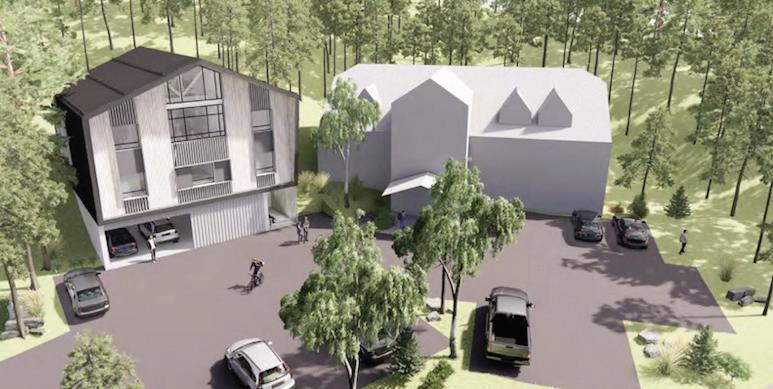
Councillor Cathy Jewett commended the inclusion of dorm-style units, a first for employee housing outside the village centre.
“I’m stoked to see this, because it is the first project with a dorm-style application. There are two one-bedroom units, but what is so great about this is that we see a dorm-style, and this is the very first one,” Jewett said.
WMSC first proposed the project in early 2019 as one of seven rezoning proposals received from private developers following
an initiative from the Mayor’s Task Force on Resident Housing. Whistler’s mayor and council previously approved the building in April 2021.
WMSC board member Stan Kranjc is leading the staff-housing project, and believes it as an excellent step in the right direction for the organization and a way to help ease the pressure on other housing projects in the municipality.
“Just like everybody, any other employer in town, we’re no different, and this gives us an opportunity to self-solve our way out of [the housing] constraint that everyone’s feeling,” Kranjc said.
“We’re doing it through altruism and volunteerism to address our own staffing strains. In so doing it also relieves, in a small way, pressure elsewhere, because every coach that we can house, every newcomer into town that we can house in our facilities, that’s one less that somebody else has to solve for.”
Kranjc hopes the employee housing will help the non-profit attract and retain coaching staff, as housing has been the WMSC’s most significant challenge in recruiting new employees.

“Coaching is our lifeblood, that’s what we
do, and we’ve been successful for 53 years and expect to be successful for another 53, but it all relies on employees,” he said.
“We seek the best coaches in the world to come here, and they all want to come to Whistler, but they need to know where they live.”
The housing agreement sets the parameters for how much a unit may be rented for, and gives priority to tenants employed by the WMSC. Failing that, the units would be available to anyone that meets the definition of resort employee.
The WMSC may also grant a master lease of one or more employee units to a qualified Whistler business.
Under the housing agreement, the maximum rent per bedroom in the ninebedroom, dorm-style unit is $1,325, while the one-bedroom units are $2,040 per month.
Coun. Ralph Forsyth welcomed the project moving forward and commended such a small organization for taking on such a project, which he hopes will continue as a trend moving forward.
“I think moving forward to me, this is a great project, because it’s really a small business, granted with access to land; it’s not a big business developing them. So I think if we could incentivize those [types of projects, it would be good],” Forsyth said.
“I hope this is a template for smaller businesses moving forward to be able to build their own employee housing.” n
FOLLOWING A HIGHLY successful pilot, Whistler’s Mature Action Community (MAC) is officially launching a dementia help program that seeks to connect Whistler’s seniors and caregivers with resources to help combat cognitive decline.
Starting Jan. 11, the Making Connections program will now be held at Our Lady of the Mountains Catholic Church at the end of Lorimer Road. The sessions will run weekly on Wednesday mornings from 10:30 a.m. to 1 p.m.
The dementia care pilot program launched at 1519 Spring Creek Drive in the fall to help people with dementia and their caregivers by slowing cognitive decline and allowing them to socialize with others in the same situation, which helps break through isolation barriers and develop support networks.
According to MAC director Charalyn Kriz, the pilot’s success exceeded expectations, with the caregivers, in particular, feeling a sense of relief from having other people share the experience.

“One person told me that she got her life back, and she said I had made such a big improvement in her life that I couldn’t imagine. She had little opportunity to
socialize, and suddenly she had this group of kindred spirits that she could meet with and share experiences with,” Kriz said.
“When I started this project, I had blinders on, and I thought it would help the people
with dementia to help slow their decline, but what has happened is the caregivers have benefited so much, because they support each other. They share ideas, and they offer to help each other.”
During the pilot, space constraints at the Spring Creek location led to only a dozen available spots, which resulted in a waitlist forming. The new area opens the program to more participants, and Kris strongly encourages people to participate.
“As we now have the space, we encourage caregivers of those with early-stage dementia to take advantage of this opportunity to meet in a welcoming environment to exercise, have fun and socialize, break through the barrier of isolation, develop friendships and make connections,” she said.
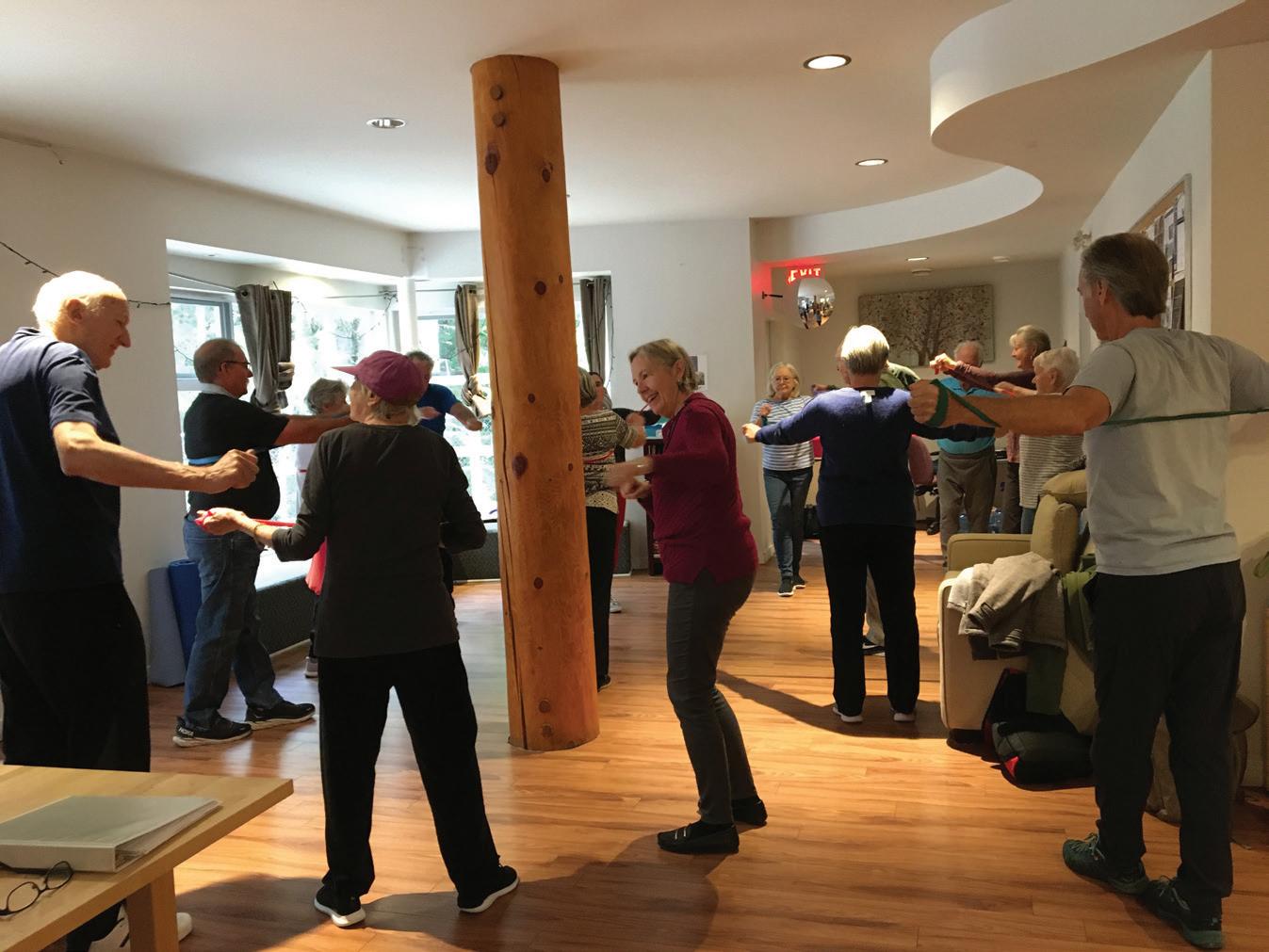
For the first three months of 2023, the program will be funded through nominal fees from participants, with additional support from MAC and the Sea to Sky Community Services United Way Better at Home program.
MAC is optimistic that the program will soon transition to the Alzheimer Society Minds in Motion program later in the spring, supported incrementally by funds from other sources.
The sessions cost $5 per person, per session ($35 per person for the first block), which entitles participants to all program components, 45 minutes of gentle fitness, games and other mentally stimulating activities, and socializing over a light lunch.
Participants can sign up under the events tab at whistlermac.org. n

WITH PEMBERTON being one of the fastestgrowing communities in the Sea to Sky, Mayor Mike Richman named “growth management” as one of four main themes that he and Village of Pemberton (VOP) staff identified during a strategic planning session late last year. The other three themes are environmental stewardship, emergency preparedness and organizational health.
Following its election in October, Pemberton’s council is still in the midst of polishing and finalizing a variety of goals and initiatives discussed during the strategic planning process. Richman indicated in a Jan. 6 phone call that various details will likely emerge in future council meetings and press releases over the weeks and months to come.
Population growth, and the related demand for affordable housing, has been a major topic of discussion among VOP staff and community members for some time. Pemberton’s population surged by 32.4 per cent from 2016 to 2021, well outmatching the average rate of the surrounding Squamish-Lillooet Regional District (SLRD) in that time. Statistically speaking, the VOP has largely been able to meet housing needs up to
this point—the goal is to keep doing so.
“Growth management is not just restricted to housing,” said Richman. “It’s traffic, transit, infrastructure, and quality of life.”
The foundation for addressing this issue will be the Village’s Official Community Plan (OCP) review, which is already underway and is expected to take two years. Richman stated that recent changes happening in Pemberton makes now “a great time” to be reviewing the OCP.
“It’s a pretty lengthy process to make sure that we gather information from residents and businesses, from local governments, etc., to get that North Star of what we, as a community, see for Pemberton in 20 years and in 50 years, and how do we get there?” he said.
The OCP review will provide critical
growth. Elected representatives have little to no ability to intervene when property owners develop their land in ways that comply with existing bylaws and zoning regulations. However, they can provide input when a developer asks for variances or rezoning measures in their real estate proposal.
Councillors can also proactively affect how future development shakes out through measures like reviewing the OCP and updating the existing housing needs assessment.
In regard to environmental stewardship, Richman affirmed the Village’s commitment to
providing services to an evolving Pemberton.
“Not unlike most municipalities, we’re taking a hard look at retention and recruitment,” he said. “The market has changed through technology, the pandemic and the way we do business. Retention and recruitment have changed as well.”
In addition to all of that, several major projects will likely break ground in 2023, including a much sought-after increase in childcare capacity, a regional park-and-ride transportation hub, and upgrades to the Friendship Trail between Pemberton and Mount Currie. As exciting as these initiatives may be, Richman said that a large part of council’s strategic planning process was aligning the goals of a council that was sworn in Nov. 1 with staff work that was already in progress at that time.
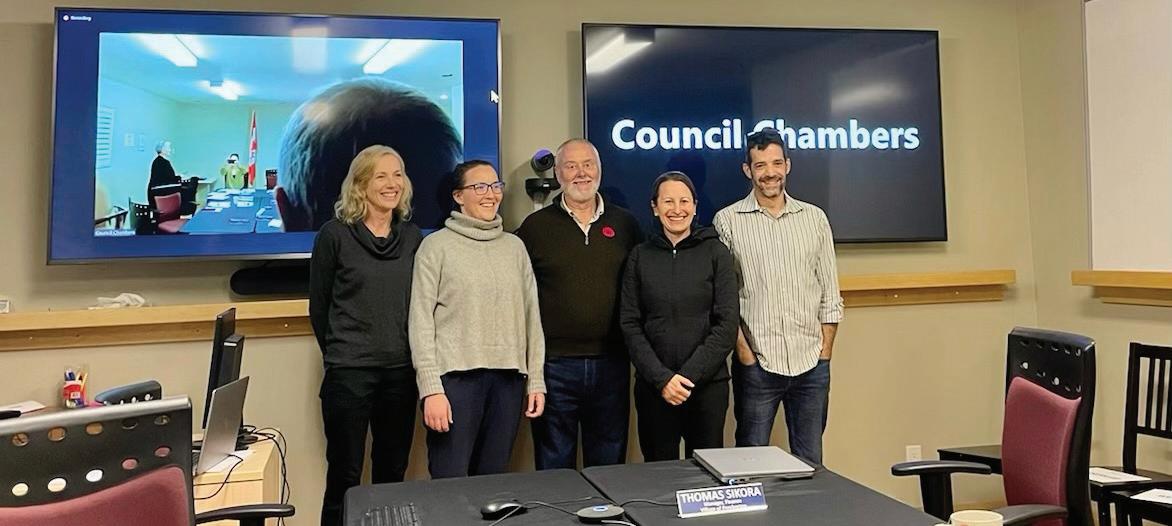
“Staff should be spending the bulk of their time keeping the lights on, so to speak, in providing the necessary services that we offer our residents,” he explained. “We’ve got to make sure that as we’re bringing [additional] projects on, that we have the capacity to do them right, do them in a timely way, and do them in a financially responsible way.”
context for how Pemberton’s current and imminent development proposals, like one south of Den Duyf Park, will take shape. Richman anticipates that the VOP will look at some “very interesting projects” in the months ahead, but he declined to talk about specific details until the actual development applications come forward.
The mayor thinks it is important for Pembertonians to understand what council can and cannot do in order to influence local
lowering its carbon footprint and encouraging residents to do the same. He also highlighted emergency preparedness in the area’s dramatic geography, including the continued work of the Pemberton Valley Emergency Management Committee, a joint effort between the Lil’wat Nation, the Pemberton Valley Dyking District, the SLRD and the Village.
Finally, in terms of organizational health, the mayor noted the significance of keeping VOP staff satisfied and well-equipped to continue
When asked what Spud Valley residents can expect from their mayor and council in the year ahead, Richman emphasized that his goal is to prioritize substance over style.
“We’re not coming out saying: we want to do all these sexy projects and be flashy about it,” he made clear. “We want to shore up Pemberton. I shy away from the word ‘resilience,’ but … we want to build our resilience. We want to build our strength as a community. Our focus is recognizing what we have, and really trying to shore it up.” n
OFFICIAL OUTLOOK Pemberton’s new mayor and council pose for a photo shortly after being sworn into office last fall. PHOTO SUBMITTED“[W]e want to build our resilience. We want to build our strength as a community.”
- MIKE RICHMAN
Mobile IV Therapy
www.whistlerrevive.com 1-604-259-1206
WHAT? The SLRD is looking for interested residents of Pemberton and Electoral Area C to serve on the SLRD Electoral Area C Agricultural Advisory Committee (AAC).
WHO? Anyone with an interest or expertise in agriculture and related matters is welcome to apply. Applicants should:
• Be a land owner and/or permanent resident of Electoral Area C or Pemberton
• Have an interest in preserving the viability of farming in the Pemberton Valley and surrounding area
• Be from the farming and ranching community (optional)
• Posess a clear understanding and knowledge of topics affecting agricultural land

• Be available to commit to roughly 4-6 day-time meetings per year, for a one year or two year term
HOW? Application forms can be obtained on the SLRD website, or by contacting the SLRD office. Please submit your application no later than 5pm on January 27, 2023.
For additional information please contact:
Brenda Kolenbrander, Planner Squamish-Lillooet Regional District Tel: 604-894-6371, ext. 264 E-mail: bkolenbrander@slrd.bc ca slrd.bc.ca/areacaac
If you’re among BC’s approximately 2 million property owners, you should receive your 2023 property assessment in the mail early in January. If you haven’t, call us toll-free at 1-866-valueBC.
Access and compare property assessment information using our free assessment search service at bcassessment ca

The 2023 assessments are based on market value as of July 1, 2022
If you have questions or want more information, contact us at 1-866-valueBC or online at bcassessment.ca

The deadline to file an appeal for your assessment is January 31, 2023
For more property information and assessment highlights, visit bcassessment.ca

DESPITE CANADA’S important commitments at the December UN COP15 in Montreal, we’re not halting, let alone reversing, biodiversity loss. More than 5,000 wild species face some risk of extinction, according to the recently released report “The Wild Species 2020: The General Status of Species in Canada.”
The main driver is habitat loss. Yet, the Ontario government plans to run a major highway through the valuable greenbelt around Canada’s largest city. In British Columbia, fracking and clearcut logging continue to decimate lands and waters. And the federal government is supporting offshore
BY DAVID SUZUKIoil projects and pipelines—all while climate change fuels wildfires, droughts, floods and other habitat-destroying events.
We’re still chasing symptoms rather than causes. We’ve been so indoctrinated into growth-based economic and societal paradigms that we fail to notice those outdated systems are themselves at the root of many problems—so we race along, extracting and consuming what we can without considering consequences or giving much back.
organism—the fruiting body where spores are produced. It’s attached to an underground network of fine tubular structures called hyphae “that branch, fuse, and tangle into the anarchic filigree of mycelium,” says biologist Merlin Sheldrake in his book Entangled Life, adding this is “better thought of not as a thing but as a process.”
These connect with plant root structures, forming symbiotic circuits to exchange nutrients, water and information. Simard writes, “I learned that this network is pervasive through the entire forest floor, connecting all the trees in a constellation of tree hubs and fungal links. A crude map revealed, stunningly, that the biggest, oldest timbers are the sources of fungal connections to regenerating seedlings.”
She found these networks even have “similarities with our own human brains,” using chemicals “identical to our own neurotransmitters” to perceive, communicate and respond to one another.
So much plundering has been and is being carried out in a state of ignorance—wilful or otherwise—about the intricately connected natural systems that ensure our well-being and survival.
Old growth and natural forests are critical. They produce oxygen, sequester atmospheric carbon, keep temperatures cooler and provide habitat for plants, animals and fungi—and much more.
The Resort Municipality of Whistler (RMOW) is seeking qualified applicants to serve in a voluntary capacity on the Transportation Advisory Group (TAG).
The purpose of the Transpor tation Advisory Group is to identify transpor tation related issues and oppor tunities to, from, and within Whistler. Using a social, environmental and economic lens, the TAG provides Council with strategic advice and recommendations regarding the assessment of, planning for, and implementation of transpor tation initiatives for the Resor t Community

Four Citizens-at-Large are appointed to TAG by Council for a two year term and typically meet quar terly for 3 hours during business hours. Download the TAG Terms of Reference at: whistler.ca/committees.
To apply, submit a resume and brief statement highlighting relevant experience and interest in par ticipating on this committee by email to edalsanto@whistler.ca or mail:
Transpor tation Advisory Group c/o Emma DalSanto
Resor t Municipality of Whistler
4325 Blackcomb Way Whistler, BC V8E 0X5
Application deadline: January 31, 2023 at 4:30 p.m.

Take forestry. You’d think research by scientists like Suzanne Simard at the University of British Columbia would have shifted the way we “manage” forests.
In her book Finding the Mother Tree, Simard describes working for the B.C. forest service when she realized practices ignored
Western colonial expansion and the industrial interests it’s facilitated have long been rooted in a sense of superiority. Colonizers often considered those they colonized as “primitives” or “savages.”
But extractivist-consumer capitalism has always been the “primitive” way of thinking and doing. Yes, we need continued advances
processes that keep forests healthy. Most of her colleagues only considered how best to “harvest” the most valuable old growth and promote commercially desirable species using fertilizers and eliminating competition from “weed” species with clearing and pesticides. The result: more than half of B.C.’s old-growth forests have been replaced by mostly singlespecies tree plantations, many of which aren’t biodiverse or flourishing.
To show how little has changed, in recently resigning from the Association of BC Forest Professionals, eminent ecological forester Herb Hammond delivered a damning indictment of ongoing practices that maximize profits and destroy forests.
Simard started looking below ground, studying the mycorrhizal (from Greek for “fungi” and “root”) networks through which plants, especially trees, and fungi connect— and communicate. What she discovered was profound, but it didn’t sit well with some industry-focused colleagues.
A mushroom is only a small part of the
in science, technology, beneficial industries and food production, but they should be directed at improving well-being within the limits of what the planet can provide.
Indigenous Peoples worldwide have learned over millennia of observation, experience and storytelling that we’re part of nature, utterly dependent on biodiversity and intricately connected not only with living things but with rocks, water and air. What we do to nature we do to ourselves.
Global conferences and agreements are necessary, but we need far more ambition and action—and humility. To fulfil our potential as a species, we need a paradigm shift, from an archaic consumer mindset to a wider vision that encompasses nature and recognizes the values and connections that will help us live well.
David Suzuki is a scientist, broadcaster, author and co-founder of the David Suzuki Foundation. Written with contributions from David Suzuki Foundation Senior Writer and Editor Ian Hanington. ■
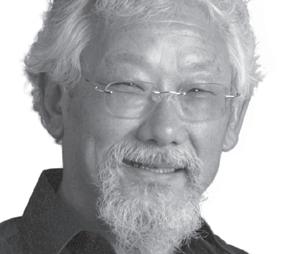
What we do to nature we do to ourselves.
LET’S INJECT a little fun into this so-far desultory winter by digging into the fine art of finding a meaningful name for a musical group that will set it apart and beg acknowledgement. Given we live in a small town, that uniqueness and recognition might not extend very far—but it might not need to.

Before I even lived in Whistler, I was enamoured of the names of bands I encountered here. The Hairfarmers, She Stole My Beer and
BY LESLIE ANTHONYWhole Lotta Led are brilliant, each for a different reason. And having been in a few transient ensembles back in Ontario, as I moved through the years here (some 23 now) other possible local band names would occasionally pop into my head—many while riding lifts. Since this season has seen a marked increase in time spent pondering life on stalled lifts, my partner Asta and I have had plenty of time to riff on these and write them down. It turned out to be a fun game to play while swinging in the wind.
To start, any number of party-band names resonate with the privilege, task and absurdity of living here: Where’s the Plow?, Last Season’s Lies, Rumour Mill, Parking Nightmare, The Olympic Gougers, Second Chair, The Singing Passholes, The Crazy Canuckleheads, The Rehabostatics, The Weak-end Warriors,
Rezoning Dèja Vu, Dirty Draft Line, Living the Dream and Fifty Seasons Gone. I only put a period there so you could take a breath before reading The Sideslippers, The Squamptones, Downhill Blues Band, Midnight Slice, The Lil’ Rippers, Running Gates and The D-spins.
Next are odes to skiing/boarding: Ragdoll, Yard Sale, Double Ejection, School of Rocks, The Snow Snakes, Piste Hazards, Core Shots Orchestra, The Delaminates, The Bent Poles and (of course) The Stoned Groomers. And those referencing runs: Blowing Chunky’s, Err Jordan, The Gunbarrelers, The Musical Dumps, Burnt
Nature needs to be repped, too. Though the occasional unpigmented bear pops up around Whistler, there’s a greater preponderance of albino banana slugs, so The Spirit Slugs seems fitting. The muni deserves recognition: Whistler’s Other (apologies to Grant Wood), RMOW Speedwagon, or The Sustainability Blues Band, because, despite aspirations, Whistler is anything but until we kill this other band: The Useless Leafblowers.
Then there’s musical genres. How about an Aussie-rock tribute called Oi Oi Oi? Moguldeath works for metal. So does
reflected in Creekside Clusterf*ck, Parkade Fire, The Cracksiders and Fresh Tracks Massacre (the odious program has been renamed, but the original moniker deserves ignominy).
What would a list of resort-town band names be without an ode to tourists? When I worked at the Royal Ontario Museum in Toronto, we called our jam band Killed by Tourists because an inordinate number of snakes in our collection bore origin tags stating those very words. This has limited applicability in Whistler, but there are plenty of amusing names that less-caustically conjure our valued visitors: The All-Season Radials, YVR Driving School, The Off-Leash Dogs, The Illegal VanCampers, Highway Closure Redux, Liftline Catastrophe, The Lost Lake Lost and Tube Park Disaster come to mind.
I even have a small trove of names inspired by my own 72-Hour Filmmaker Showdown finalists—Rob Boyd is God (from Favourite Son), Whistler Bathroom Odyssey (from Missing), and Confessions of a Ski Bum (from 32 Short Films About Johnny Thrash).
Ratfink Stew, Don’t Freakin’ Miss, The Permanent Closures and Fitzsimmons Fitzsimmons (because what’s another thing named Fitzsimmons?). Or to do with snow: How Deep Was It?, Up to Here, Analog Snow Phone, Big Dump, Death Cookies and Sastrugi Rain Crust.
PHOTO BY RECEP-BG / GETTY IMAGESAnyone miss The Boot Ballet? Of course, you do. That’s a great throwback name, but how about Temple of the Boot or Ghost of the Boot? Considering core mountain culture, there’s The Lifties, Seppo’s Army, The Dirtbaggers, Planetary Ski Bohemians and Duct Tape Boogie Band. (Wouldn’t the perfect ski-town duel be a double bill featuring The Patrollers and The Poachers?)
Columnar Joints (the basalt you see along the highway) or even Black Tusk (a bazillion businesses use this name, but a band seems obvious). Punk names channeling mayhem are legion: The Village Homicides, Dead Bears, Epic Fail, Westside Toad, Midday Sirens, The Lugers, Butthole Snowboarders and River of Golden Showers. Speaking of the latter, how about The Exploder 200s? Folk rock is also low-hanging fruit: The Sea to Skydiggers, The 99ers, The Hemlocks, Frog Hollow (bluegrass) and The Whistling Marmots (a cappella).
I bought a place in Creekside when I first moved here because it was easier to ski from than the village. That long-destroyed promise is
And finally, you don’t end up with a phone full of band names without having favourites. Our Top 10: Bomb Tram, Halfday Ticket, Hotbox Gondola, Eighteen Roommates, Gold Medal Hangover, Broken Snowschool Scene, Death Before Download, Hot Tub Sound Machine, Slow Zone Police Club, and the one that kicked it all off, Thirtybuckburger.
Since copyright doesn’t apply to band names (they’re considered branding), the only way to protect them is by registering a trademark. I don’t have the time, money or inclination to do that, so if you like any of the names I’ve listed, get on it. You can steal me a beer sometime.
Leslie Anthony is a Whistler-based author, editor, biologist and bon vivant who has never met a mountain he didn’t like. ■





















































































My dad kept a jar of peanut butter in his glovebox to mask his booze breath in case he ever got pulled over. This was required at all times of day because he was always some level of drunk. You’d think watching my highly successful parents descend from a lavish, affluent international existence into deep alcoholism, poverty and homelessness would have made me wary of my own relationship with booze. Cue the mid-1990’s and an impromptu move to Whistler as a 20-year-old from out east, laden with college debt.
I quickly learned that drinking regularly is steeped in the routine here and goes hand in hand with mountain adventure, and I was onboard. For years, there were great parties with copious amounts of booze—but mostly it was about social drinks after work or play, generally limited by the funds in the bank. There was never a ski day, a mountain bike adventure, or a day at work that didn’t end with drinks. The perfect cold beer was the reward that solidified the camaraderie after a satisfying adventure or a frenetic après bartending shift slinging beer to the masses. I was pretty good at drinking; I could hold my liquor with dignity while increasing my tolerance, lending me the ability to drink an astounding amount in a single sitting.
After about a decade, I started to consider if I might be drinking too much, though I was in the middle of the pack based on my social observations. Having such alcoholic parents provided a false sense of security, because I knew I would never be as bad as they were. I also had a difficult time finding information that I felt applied to my circumstance. I was a successful professional. I had a beautiful family, a wonderful social circle, and incredible adventures. I was certainly not going to stand up in a room and proclaim myself an alcoholic. Living in a mountain resort town, if I was an alcoholic, then there was an entire population that had to stand up with me. In a 2014 survey by Vancouver Coast Health, Whistler earned the distinction of having the highest rate of binge-drinking in B.C., with 48 per cent of Whistlerites reporting they binge drink one or more times a month, more than double the provincial average.

Binge drinking is defined as five or more drinks in a sitting for men and four or more for women. Four drinks! That is après ski on a Tuesday, with a Baileys coffee, a bloody Caesar and a couple Coronas—and that’s before wine with dinner! To me, these definitions were utterly laughable and easily dismissed. Early on, I went so far as to ask my doctor if they had any recommendations about how much booze was too much and I was offered two options: I could test my liver to see if any damage had already been done, or I could try Antabuse, also known as disulfiram, a drug that blocks the processing of alcohol in the body, making the user feel extremely ill if they have a drink. Again, neither suggestion seemed relevant to my situation, and the status quo continued on for another decade.
Like a bad country song, it was personal tragedy that spurred a dedication to drinking: I ran over my old dog. Heartbroken and leaning on what I had come to know as my most comforting companion, I was drinking daily. Never during the workday and never letting it affect my productivity, but when 5 p.m. hit, wine was ever-present. Two decades after moving to the mountains, I knew I wanted to drink less, but was uncertain how to make this a reality. After all, every part of my adult life was unquestioningly saturated in alcohol: celebrations, book club, mourning, adventures, vacations. In fact, other than when I was pregnant or breast feeding, I can’t think of a single adventure or social event I attended where drinks weren’t factored in. Inspired to figure out how to imbibe less when there was an endless stream of compelling events that featured alcohol, I reached out to a friend who had quit drinking despite a long career working in the bar industry. That friend gave me the best advice, which started with a book recommendation.
Annie Grace is the author of This Naked Mind: Control Alcohol, Find Freedom, Discover Happiness, and Change Your Life. The first of many books I read on this topic, it highlighted our spectacularly complex subconscious brain and how it can unknowingly drive our behaviour. When it comes to making any kind of decision, your brain uses a lifetime of experiences it has catalogued to create shortcuts so you’re equipped to quickly make choices. This shortcutting process creates subconscious biases and there are more than 100 types of identified biases that drive behaviour. Personally, I had thousands of experiences that told me booze was an essential part of having fun, relaxing, and socializing. This quick decision-making is amplified by the addictive properties of alcohol and there are very specific biases that contribute to the motivation to both crack that first beer and continue drinking throughout the evening. The physiological effects of the first beer or glass of wine are pleasurable, and range from increased social skills, mild exhilaration, joyousness, relaxation, and even warm tingling down your arms and legs. Unfortunately, these are short-term, and as you continue drinking to extend these great feelings, the physiological response deteriorates into a range of less euphoric feelings, including overly expressed emotions, unwelcome opinions, boisterousness, reduced motor skills, and mood swings. Of course, behaviours can get progressively worse the more drunk one gets, a recipe for some seriously poor decision-making. And no matter how many drinks you have, you will never be able to recreate the same feeling you got from that first sip.
Increased tolerance paired with subconscious bias creates the conditions that cause drinkers like me to continue drinking, even past the point when our conscious mind suggests we stop. Drinking in moderation had long passed as an option by the time I got serious about quitting, and a quote attributed to Irish poet Brendan Behan perfectly sums this up: “One drink is too many for me and a thousand not enough.”
There were many nights, chugging water at 3 a.m., when I would make a firm commitment to myself not to drink that day, which usually only lasted until about 5 p.m. In Adam Grant’s 2021 book Think Again: The Power of Knowing What You Don’t Know, he demonstrates how uncomfortable it is for people to change their minds.
“Questioning ourselves makes the world more unpredictable. It requires us to admit that the facts may have changed, that what was once right may now be wrong. Reconsidering something we believe deeply can threaten our identities, making it feel as if we’re losing a part of ourselves,” he writes.
This discomfort causes cognitive dissonance, which exists when our actions don’t match our mental commitments, creating a sense of psychological disturbance, however mild and imperceptible to our conscious mind, and can lead to a
stronger urge to pick up a drink to calm this underlying stress. Ultimately, it’s a self-perpetuating cycle. Despite being inherently untrue, believing wholeheartedly that I needed a drink just to have fun at a party drove me to keep pouring. When experiencing cognitive dissonance, you will work hard to justify your actions (I’m having a drink) that contradict your beliefs (I should quit drinking) and employ strategies to reduce the dissonance your brain is experiencing through justification and rewarding behaviours (drinking more).
Of course, these subconscious biases aren’t easy to overcome and are commonly reinforced by public messaging and social norms. For example, up until late 2019, Health Canada’s webpage on problematic alcohol use stated, “while a small amount of alcohol may provide health benefits for some, drinking excessively can cause serious health issues.”
When looking for resources on drinking less, this conflicting messaging only served to reinforce the stereotype that you are the problem rather than the addictive substance you have been conditioned to see as an essential component of your life. The idea that low to moderate amounts of alcohol has health benefits has been widely debunked by science, and yet the message is still amplified by both drinkers and lobby groups. Many studies have emerged over the last decade that highlight the significant health problems that stem from drinking even small amounts of alcohol, including damage to cardiovascular, brain, and digestive health and increased risk for a number of cancers, not to mention the array of social harms associated with alcohol use.
“The risk of negative outcomes begins to increase with any consumption, and with more than two standard drinks, most individuals will have an increased risk of injuries or other problems,” read a report published last year by the Canadian Centre on Substance Use and Addiction following two years of research and a review of more than 5,000 peer-reviewed studies.
These new studies prompted Health Canada to revise its low-risk alcohol intake guidelines in 2021, reducing the maximum recommended intake from 10 to two drinks per week.
Of course, we are also constantly bombarded by pro-alcohol messaging on social media,

in traditional media, advertisements, entertainment, and through observing the behaviour of others in our peer group. It is hard to get away from the idea that drinking is a great idea for all situations. For me, watching for these cues became essential because they worked to counter the new notions I was developing about the true impact of booze. When I reflect honestly, I know a celebration with friends is not fun because of the liquor, but because of my great friends.

I truly loved drinking for a very long time, and it was woven so tightly into the fabric of my social life. It’s been personally rewarding to build awareness of the biases that were shaping my behaviour and relationship to booze. As Carl Jung famously said, “Until you make the unconscious conscious, it will direct your life and you will call it fate.” This journey to understand my own mental models related to booze has also permeated the way I think about all things, including family, work, motivation, and friendships. I am continually building new and positive biases that confirm life is so much better without alcohol, and that really does include all those things I thought I could never experience without a drink—nice dinners, epic adventures, exotic vacations, stressful and tragic situations.
Someone asked me recently if I still wish I could have a drink. It’s been almost four years since I’ve had one, and I honestly feel so fortunate that I never have to drink again. I sleep so well. I think so clearly. I am a better parent, friend, and partner, and I have been able to accomplish so much more in that short time than I would have had I still been drinking. My bar industry mentor recently experienced significant personal tragedy that for some would have been met with a bottle in hand. When I checked in with them, they said, “Thank goodness I don’t have that monkey on my back.” Like my friend, I can’t ever see a reason that alcohol would be required to make any event better or as a coping mechanism. Admittedly, I may not win a lip-sync battle again, but the conversations and human interactions I have with people now are so much more genuine and memorable. It was hard to write this story for such a public audience, but I wanted to share it as we enter a new year filled with opportunities to make small changes with big rewards. You don’t have to stop drinking to start to consider your own relationship with alcohol in a meaningful way. With any luck, starting that journey will lead to positive changes down the road.
If you are struggling with alcohol use, find more information by calling B.C.’s Alcohol and Drug Information Referral Service at 1-800-663-1441, or search for resources at bc211.ca. ■
whistler squamish bowen island gibsons coastal rural city of north vancouver vancouver new westminster district of north vancouver mission maple ridge sechelt port coquitlam port moody chilliwack metro vancouver coquitlam township of langley delta rural sunshine coast pitt meadows fraser valley south surrey/ white rock surrey west vancouver/lions bay abbotsford hope powell river burnaby city of langley richmond
















THE SEA TO SKY area has long been a hotbed for mountain biking, home to established superstars like Finn Iles and Jesse Melamed as well as exciting up-and-comers like Wei Tien Ho and Cami Bragg. All four of them live in Whistler, but Pemberton too is well-represented by a pair of brothers: Lucas and Tegan Cruz.
“We’ve lived in Pemberton our whole lives, so that’s a pretty easy way to get into mountain biking,” explained Lucas. “Our parents were super into it, so it was just kind of the natural thing to do.”
The Cruz brothers are indeed natural riders who have established themselves on the competitive scene. Both have travelled extensively on the World Cup circuit and feel like they’ve already seen a lot of the outside world.
“I always found it funny in high school, when everybody I grew up with was always so excited to leave [Pemberton] and get out to different places and go to the city. I was confused why they wanted to do that,” Lucas said. “But then, I realized it’s because I’ve had so much experience around the world.
How lucky am I to be racing and riding and travelling all over the place?”
At 21 years of age, Lucas added two secondplace finishes to his resume this summer at the BC Cup DH series and the Canadian DH National Championships. He also narrowly missed out on the podium at Crankworx Whistler last August, placing fourth in the Canadian Open DH to go with 12th in specialized dual slalom and 64th in Air DH.
Lucas was thrilled to showcase his skills at one of the world’s premier mountain bike festivals, which returned to Whistler after two years away.

“It was awesome to be racing in front of the home crowd,” he recalls. “My whole family was there. Even my principal from high school came out to watch. So yeah, I was really close to the podium on that one, and it was super tight racing between a lot of the top World Cup racers.”
Tegan added a nice haul of hardware to his trophy case last year as well. The 17-yearold sped to seven podium finishes, including four runner-up placings and two victories: one at the Canadian Junior DH Championships in July and another in September on the BC Cup circuit. He also showed out at Crankworx Whistler, coming second in the U19 age category of the Canadian Open DH.
Another one of Tegan’s season highlights was last September’s Norco Canadian Enduro Championship. Despite specializing in downhill, he managed to finish second on home soil behind Ho, Whistler’s favourite junior athlete, according to Pique’s 2022 Best
of Whistler poll.
“Wei Tien’s one of my best buddies. We’ve grown up skiing and riding together,” Tegan said. “I was stoked to even be there, finishing second right behind him [at Enduro nationals].”
With his inaugural season of junior competition behind him, Tegan has a newfound perspective about the importance of hard work and focus, and can’t wait to bring his best in 2023.
For Lucas and Tegan, life in a mountain bike mecca like the Sea to Sky is like living on Cloud 9. They get to sharpen their skills exploring breathtaking trails every day. It doesn’t hurt to have a bona fide star like Iles living five minutes away—Iles often rides with the boys and uses the gym at their house.
“The camaraderie and community is at the highest level,” said Lucas. “Everybody kind of sees mountain biking as a super friendly sport, and everybody’s just giving high fives on the trails, but that also carries through to racing World Cups, when you don’t speak the same language as those people, however famous they are.
“You always feel welcome, and everybody’s doing it for the same reason.”
Yet, above all else, it’s the family connection that matters most.
Not every group of siblings shares major interests. Fewer still pursue the same passion seriously. However, mountain biking is in the
Cruz family’s blood, and it’s not just Lucas and Tegan and their parents. Their 11-year-old brother, Levi, has himself discovered a love of riding after being dragged around to many races as a younger child. Levi now keeps up with mountain bike contests throughout the year and gets to meet the sport’s superstars by travelling to World Cup events with his siblings.
“It’s cool to see that [passion] in him as well,” Lucas remarked.
As for the older Cruz brothers, they treasure the bond that has formed over practising the same sport at the highest possible level.
“I’ve grown up chasing after Lucas, for sure, starting with BMX racing and now here at the World Cup circuit,” said Tegan. “This coming year is my last year of junior, and then I’m in the elite field with him. Some fuel to the fire.”
For Lucas, the feeling is mutual. “It’s just a dream, really, because we can help each other out at the races, and we’re racing the same tracks now,” he said. “We can just support each other, like we always have, and keep enjoying it.”
After a holiday spent snowmobiling with their family, the Cruz brothers plan to head to California to get back on two wheels: mountain bikes, dirt bikes and road bikes. There is plenty of training ahead, and plenty of technical builds to test, before the next season kicks off in June. Each has a different bucket-list location that they would love to visit: Tegan has never been to New Zealand, home of Crankworx Rotorua, while Lucas hopes for the World Cup to return to Norway so he can visit Scandinavia for the first time. n
BROTHERLY BOND Lucas Cruz (pictured) and his brother Tegan are two of Pemberton’s exciting young mountain bike stars. BY DAVID SONG
BY DAVID SONG
IT HAS BEEN A LONG ROAD back for Juliette Pelchat.
After COVID-19 all but wiped out two competitive snowboard seasons at the turn of the decade, the Whistler native broke her ankle in 2021 and missed a third straight campaign. At 18 years old, Pelchat is already a full-fledged member of Canada’s national snowboard team alongside Olympic medallists like Mark McMorris, Max Parrot and Laurie Blouin, but injuries and a global pandemic have unfortunately slowed her development.
In fact, December’s historic World Cup big air event in Edmonton was just Pelchat’s second competition in the past three years.
“I was definitely, like, scared-nervous at the start of the season just to come back,” she admitted. “It’s been hard on my mental health, going through an injury and just watching a lot of people around me progress. I’m super stoked for them, but just like for my own sake, I was kind of bummed.
“Now I’m back, and I’m taking advantage, and I’m really excited for all the opportunities to come this season.”
Pelchat, a slopestyle rider by trade, will compete in her preferred discipline later in January. There were no FIS World Cup slopestyle events scheduled in the last few months, forcing her to return to the circuit in a relatively unfamiliar event: big air. Unlike slopestyle, which combines the technicality of rail-riding with three consecutive jumps, big air—as its name indicates—is all about flying high and executing spectacular tricks.
Finishing 21st in Switzerland last October, Pelchat was glad to reintroduce herself to the competitive scene, but promptly faced a new challenge in her next outing. Edmonton’s big air event was notable for being the first of its kind to take place in a stadium, featuring one of the largest scaffoldings ever built for the FIS World Cup.
Unlike natural jumps, scaffoldings tend to force riders to hit the jump in a straight line, rather than preparing themselves with a series of setup turns. The artificial snow used on a scaffolding also feels markedly different from natural snow.

The Commonwealth Stadium jump proved difficult even for seasoned big air veterans. Eight of 21 originally-slated competitors refused to participate, and defending Olympic bronze medallist Kokomo Murase withdrew after qualification. An inability to build up sufficient speed was the main issue, especially for female athletes who tend to be lighter than their male counterparts.
Pelchat remembers being terrified to launch herself off of the 45-metre ramp in Edmonton. She watched as rider after rider went airborne in practice, but failed to make a clean landing.
Then McMorris, a three-time Olympic bronze medallist, walked over to her. “Just stay low,” she remembers him saying. “If you pump [your legs], that’s how you lose your speed.”
Even with that advice in mind, Pelchat’s legs felt like Jell-O as she accelerated down the jump for the first time. Somehow, her lower body ended up over her head in midair and she hit the curved part of the landing hill on her back. The only thing she hurt was her pride.
Nonetheless, Pelchat had gained confidence. She was able to maintain speed fairly consistently on competition day, though she chose to be realistic and keep her tricks, including a back 360, on the conservative side. She finished 11th, short of the final, but got to watch fellow Whisterite Jasmine Baird snatch gold.
“Me and Jasmine weren’t really friends in the past because we had a huge age gap, and we just recently started to get close because we’re travelling together,” said Pelchat. “She’s been such a good person to have on the team with me because she’s so encouraging and has such a good vibe.”

Pelchat is well-known throughout the Sea to Sky for spreading good vibes herself. As the daughter of Whistler backcountry legend JF Pelchat, she began snowboarding at three years old and fondly remembers learning the basics at Whistler Blackcomb’s beginner-friendly Magic Chair.
She didn’t limit herself to fresh powder either. Pelchat also branched out into skateboarding with her younger sister, Amalia, and together they run an all-girls skateboard group called the Real Wild Kittens (RWK). Although she focuses on slopestyle and admits that Amalia has become better on four wheels than her, Pelchat still thinks it is important for her to keep a foot in the skateboarding world.
“The more board sports you do, [the better it is] for snowboarding,” she said. “And now, Amalia and I are trying to create a brand out of [RWK] for awareness of female involvement in male-dominant sports. We’re trying to promote girls learning in a safe environment, and feeling comfortable to be part of the board community.
“A lot of people that I talked to who have [succeeded] said it was a pretty lonely road on the way up. They didn’t really have a girls crew to shred with, and it was difficult, they weren’t having fun. I kind of wanted to help girls avoid that, because I feel like you should be loving the sport that you’re competing in.”
With injuries hopefully in the rearview mirror, Pelchat loves her sport as much as ever and has “too many” New Year’s resolutions to think of. She hopes to learn as much as possible from every experience: every training camp, practice, contest or bad weather day. She wants to add a front 1080 to her arsenal of tricks and qualify for the finals of a World Cup event.
Above all, she hopes to inspire more girls from Whistler, Canada, and anywhere on Earth to take up board sports and pursue what could ultimately become their passion. n







Toonie #1: Jan 12 at Lost Lake


Register: 6:00pm at the Passive House
Race Start: 6:30pm
Bring a headlamp and $2
Next Toonie: January 19th
Sponsors:



• To align, with the Local Gover nment Act, the notice period for Special Meetings and the method of providing notice to Directors; and
• To remove the requirement that Committee meetings must have a specified place (physical location) at which the public may hear or watch and hear the meeting.
FOR FURTHER INFORMATION, please contact Kristen Clark, Corporate Officer (604) 894-6371 ext 230 or (toll-free) 1-800-298-7753 or kclark@slrd.bc.ca
AMONG THE MORE than 12 million Ukrainian refugees who have been forced to flee their country in the wake of Russia’s fullscale invasion last February, 30 or so have quietly settled in Whistler, half a world away.

Thanks to both a lively WeChat group and weekly English classes at the library, the new Whistlerites have been able to maintain a strong tether to their native culture and traditions. But as a group, they still have yet to all get together in person. That is, until Jan. 16, when the Whistler Multicultural Society (WMS), in partnership with the Whistler Public Library, will mark Orthodox New Year—and the entire community is invited, Ukrainian or not.
“It’s a very great opportunity to explain to people who live in Whistler about Ukrainian traditions and culture,” said local Ukrainian Petro Stryganyn.
Ukrainian holidays tend to be big on food, and Orthodox New Year is no exception. Food plays a central role not just on that day, celebrated Jan. 14, but the night before as well, known as Malanka. It is believed the wider the variety of food on the table, the more generous the following year will prove to be. Pork dishes are a staple, as the animal symbolizes abundance, while cooking fish is considered a bad omen, because happiness can “pour” out of the house. Comfort food is the order of the day, and it’s not unusual to serve a whole stuffed pig; kholodets, a dish made from meat in aspic; cured slabs of pork fatback called salo; and vershchaky, made from roasted pork marinated in a fermented beet beverage known as kvass
The luxuriating continues for Ukrainian families on the 14th, who traditionally eat a dish called “Herring Under a Fur Coat,” a lavishly layered salad made from herring, onion, potatoes, carrots, beets and a healthy serving of mayo and grated egg. Stuffed fish is another common dish, as well as sprats, a small saltwater fish, served on a crispy baguette. I’m also told caviar sandwiches are
a thing for Ukrainian New Year, in which case, sign me up.
With Ukrainian culture under constant, violent attack over the past year, celebrating Orthodox New Year—a holiday rich in tradition for Ukrainians also known as “Old New Year”— comes with added significance in 2023.
“This Christmas time I’m not in Ukraine
and it is sometimes difficult,” Stryganyn said. “I can try to save Ukrainian traditions in this place here. I can make sure [not to] forget these traditions here.”
Kharkiv native Stas Vishnevsky echoed his countryman’s sentiment, and the chef and restaurateur is a man who knows a thing or two about the connective power of food.
POPULATION“We have to celebrate the New Year even now, no matter how hard it is for us. Now is such a difficult time; we must be together, support each other, help, and the New Year is a good reason for this,” he wrote in a message, with some help from Google Translate.
Vishnevsky owns a chain of pizzerias, and since Russia’s invasion last winter, he has spent nearly every single moment of his free time preparing and delivering crucial food and supplies to Ukrainians in need—often at risk to his own safety. After profiling the 44-year-old for a cover feature about one Ukrainian-born Squamish woman’s mission to raise funds for Vishnevsky’s essential work (“From the Sea to Sky to Kharkiv, a ray of hope,” June 12), Pique checked in with him again ahead of the New Year.
Of course, like every Ukrainian, Vishnevsky’s holiday will look starkly different this year.
“Unfortunately, the country house, where we celebrated the New Year every year and gathered with the whole big family, was bombed completely. Therefore, this year we were all going to celebrate at home, but unfortunately, because of what is happening, there is no festive mood,” he said.
Still, Vishnevsky holds hope, confident the Ukrainian resolve that has been on full display over the past year will ultimately prevail—with the support of the international community.
“There will be a victory, and it will be our common victory with you. We will show and prove to Russia that together we are a force and they will not break us,” he wrote.
The Ukrainian New Year’s event is set for Monday, Jan. 16 from 6 to 7 p.m. at the Whistler Public Library, where members of the local Ukrainian community will talk about their New Year’s experience from back home. Join in the singing of traditional songs, enjoy some Ukrainian food and sample uzvar, a non-alcoholic drink made from dried fruit.
To learn more about donating to Vishnevsky, visit the “Sea to Sky Ukrainians” group on Facebook or email Dasha Axelsson— who has helped raise more than $35,000 for the cause—at helpstasukraine@axelsson.ca. n
F Barre Fit 12-1 p.m. Marie-Anne









R Prenatal Fitness 5:30-6:30 p.m. Sara

F Bike Fit 6:45-7:45 p.m. Katrina

I Gentle Fit 1:30-2:30 p.m. Diana
I Zumba 10:30-11:30 a.m. Suzie
R Mom & Baby 2.0 12-1 p.m. Sara
I TRX Mixer 5:15–6 p.m. Mel





F Spin 6:15-7:15 p.m. Marie-Anne
I Strong Glutes & Core 6:15-7:15 p.m. Carly
I Zumba 12:15-1:15 p.m. Carmen
I Mountain Ready 5:30–6:30 p.m. Anna

F Spin 6:15-7:15 p.m. Courtney
I Slow Flow Yoga 8-9 p.m. Laura
Cardio 9-10 a.m. Lou




I Gentle Fit 1:30-2:30 p.m. Diana
I HIIT Express 5:15-6 p.m. Alex

F Spin 6:15-7:15 p.m. Alex
I Zumba 6:30-7:30 p.m. Carmen Check before you rec (reate)! Avoid disappointment. Visit whistler.ca/notices for Meadow Park Sports Centre operational changes and closures. whistler.ca/notices | 604-935-PLAY (7529) Love the corduroy? Let’s save it together. Walking, running, and dog walking must be done elsewhere in Whistler while the Lost Lake Nordic Trails are open. whistler.ca/nordic








LATE LAST YEAR, Vinyl Ritchie made a longtime goal come true.
Back in 2013, the Whistlerite (who you might also know as Scott Arkwell) was DJing après at the GLC with the founder of Motown on Mondays in the crowd.
Arkwell knew about the worldwide dance party that aims to spread Motown music around the globe every Monday, and was pleased when he reached out after his set.
“He said he liked what I was doing and hollered at me,” Arkwell says. “I played an event they had in Honolulu and it was really cool. I wanted to do one in Whistler.”

Fast-forward to November 2022. “It was just time to offer something different to the village.”
First, Arkwell found a venue in The Raven Room (“It seemed like a perfect venue, and they were into it”) and then he recruited two other DJs to join him.
“We have Whistler Soul Club, who is from Manchester originally and he’s a good ol’ soul boy, and we have Foxy Moron … We all just pull records out of our collection,” Arkwell says.
Arkwell says. “They think they’re CDs.”
As for DJing a set with vinyl versus a laptop or even a USB stick, “there’s a lot more to it,” he says. “It’s a way more delicate touch.”
“People are curious. We set up right on the bar in there, too. Right when you walk in the door, people see us and can see the crate and the records. Some people don’t give a toss and
he says. “House music, drum ’n’ bass, the roots of everything that’s happening right now started in the ’60s and ’70s. If you’re into that sort of thing, this is the foundation of it.”
The weekly event’s clientele might currently skew slightly older—and Sheringham Distillery sponsors the night with “fancy spirits”—but it offers a chill evening for anyone.
“We like to keep it a nice volume,” Arkwell adds. “Rap with our friends, have a nice cocktail, get cosy. It’s not about pounding beats and dancing. It’s about sharing some records that somebody might like to hear.”
For his part, organizing the new night gave Arkwell the chance to finally meet Ben Keating, the man behind Soul Club Whistler.
Aside from featuring Motown music— new and old—that’s the other novelty of the night. Every week, the three DJs pick seveninch records (which generally only have one single per side) from their collections and haul them in crates down to the venue.

“Some people don’t know what they are,”
others are like, ‘What is that?’”
So far, the reaction to Motown music has been similar. But Arkwell has an argument for young Whistlerites who are strictly into hip hop or EDM.
“If you’re into DJ culture or hip hop or soul music, this is the roots of DJing culture,”
“He’s been championing soul music every chance he gets,” he says. “We had always talked to each other online—we had been chatting for three or four years—but had never met until this night started. We met on the very first Monday night. It’s like we’ve known each other for years.”
Catch Motown on Mondays at The Raven Room from 10 p.m. until 1 a.m. n
SOULED OUT Vinyl Ritchie, a.k.a. Scott Arkwell, has launched a Motown-themed night at The Raven Room. PHOTO SUBMITTED“If you’re into DJ culture or hip hop or soul music, this is the roots of DJing culture.”
- SCOTT ARKWELL
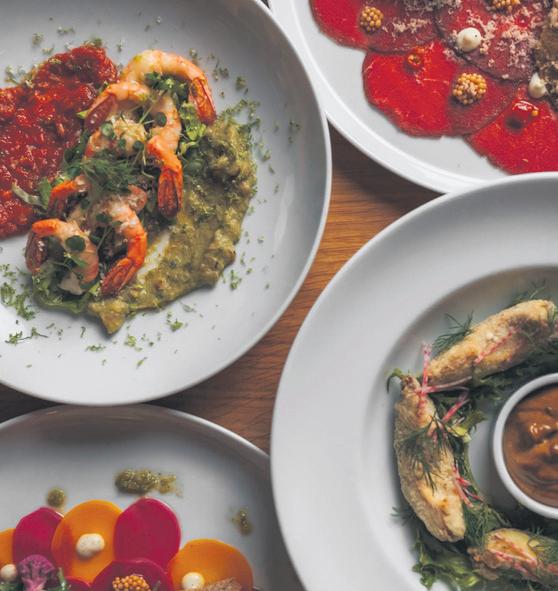
 WHISTLER ART TEACHER RACHEL COLVIN HOSTS POPULAR POTTERY SESSIONS EVERY THURSDAY NIGHT
WHISTLER ART TEACHER RACHEL COLVIN HOSTS POPULAR POTTERY SESSIONS EVERY THURSDAY NIGHT



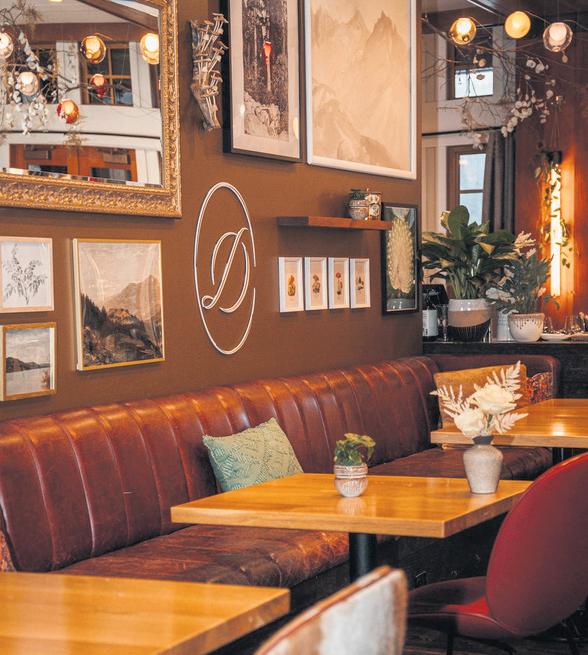

 BY ALYSSA NOEL
BY ALYSSA NOEL
RACHEL COLVIN knew there were locals interested in getting their hands in some clay.
But she didn’t know that one Facebook post offering pottery classes would lead to those classes selling out in a day.
She has two ideas as to why this might be.
“It’s tactile,” she says of pottery. “There’s something about the tactile nature of it—getting their hands dirty. It’s really satisfying. That’s part of it. And the second part is just to get the opportunity to connect with other people.”
While those first sold-out classes took place last April in her Pemberton garage, Colvin has since moved over to Whistler’s Maury Young Arts Centre, brought on ceramicist Shannon Munro to help, and adopted the name “The Makery,” under which she hopes to host art workshops of all mediums with various teachers.
“I’m an arts teacher by trade—I teach at the Whistler Waldorf School—and at art school we were trained in everything; painting, drawing, creating things, weaving, a little bit of everything. My vision long-term is a variety of things could be taught.”
For now, though, The Makery is hosting hand-building pottery sessions every Thursday night at the Maury Young Arts Centre. Through trial-and-error, and a desire to make the classes accessible, they’ve been tweaking the details.

Potential potters will have to sign up for two two-hour classes in order to have enough time to make their creations then glaze them. (Though it’s slightly different for anyone who has already taken one class and has yet to sign up for a second glazing session.) This set-up
has the added bonus of reuniting a group of strangers who may have made a friend connection during the event—something Colvin has been pleased to witness happening.
“I do get big groups booking in together, and I seat them together at a table, but I also get people who come by themselves,” she says. “What I love is throughout the evening hearing them chat and by the end of the evening, they’re exchanging phone numbers. That’s exactly what I wanted to happen. I wanted people to find their people,” she says.
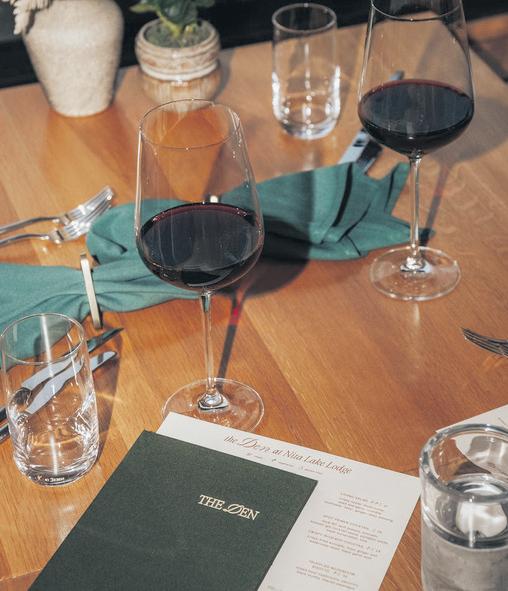
Successful connections aside, she’s also been impressed at the range of creative pieces people make. There was a tattoo artist who made a bowl with layers that looked like seaweed, another girl who made a “bed” for her cellphone so she wouldn’t be tempted to check it at night (an idea borrowed from Pinterest), and the ever-popular “boob mugs.”

“It’s productive and there are so many cute things people are making—and practical things,” Colvin says. “Every night I’m impressed and blown away. They’re so creative, it’s amazing.”
While she has a full-time job—and three kids—with the addition of Munro to her team, Colvin is planning to add a Wednesday night to the mix, offer pottery sessions at private parties, and add theme nights (think screening Ghost at the Maury Young then hitting the pottery wheel), and collaborations.
“We’re totally open if people have ideas,” she says. “Maybe someone out there has something they’d like to come teach.”

You can reach Colvin at info@ themakeryworkshops.ca. For more details about the pottery classes find them on Facebook at The Makery Workshops, on Instagram @themakerywhistler, or search “Teacher- Rachel Colvin, Ceramicist- Shannon Munro” on eventbrite.ca. n
 HANDS ON The Makery Workshops are offering pottery classes at the Maury Young Arts Centre every Thursday.
HANDS ON The Makery Workshops are offering pottery classes at the Maury Young Arts Centre every Thursday.



Join Protect Our Winter athletes, ambassadors and enthusiasts for SNOWGA + SOUND—an all-levels yoga class designed for snowboarders and skiers, followed by a relaxing soundbath journey designed to relax and restore. Tickets are limited.
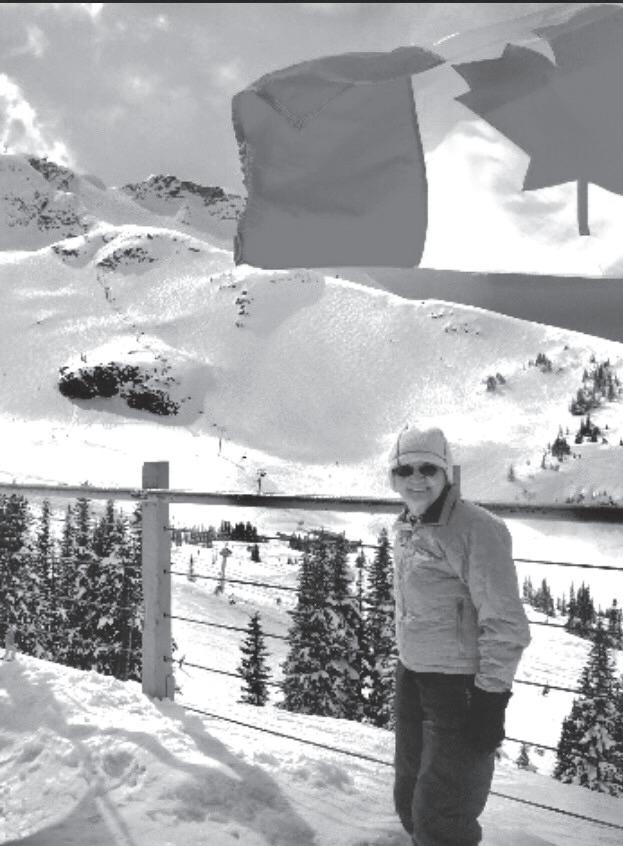

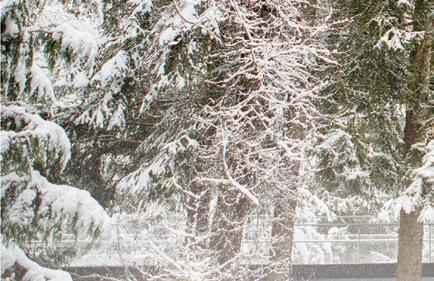
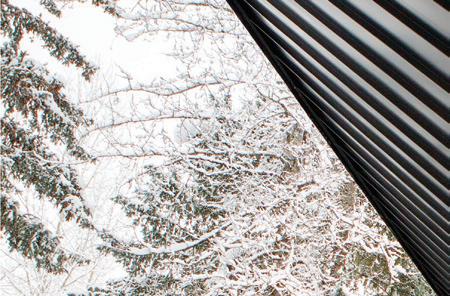
> Jan. 13, 6 to 8 p.m.
> Audain Art Museum




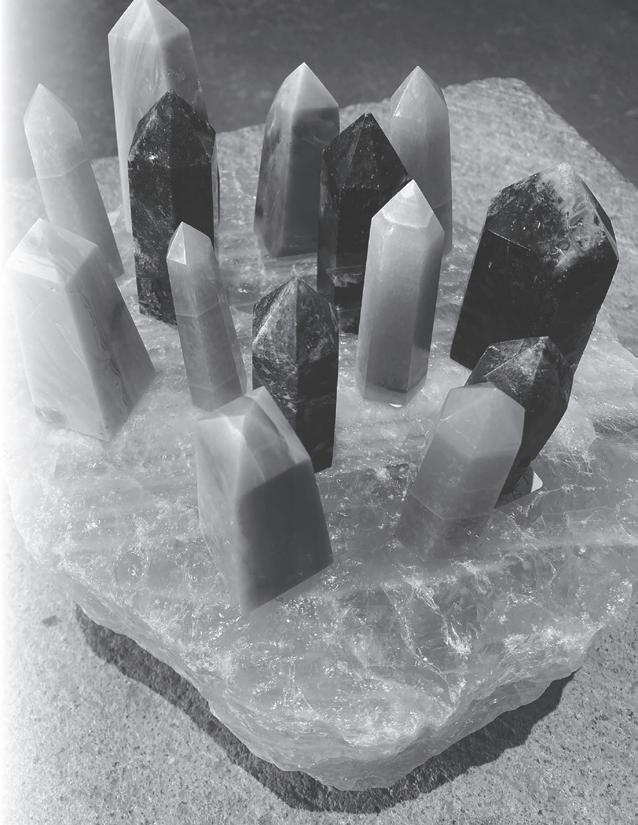

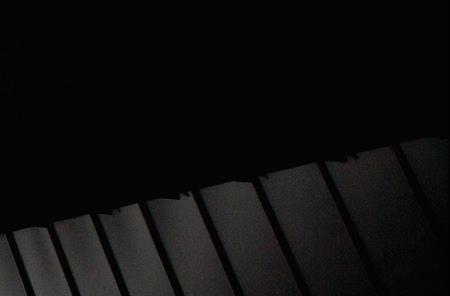


> $50 donation to POW


> Find full details at protectourwinters.ca/ snowga_sound.




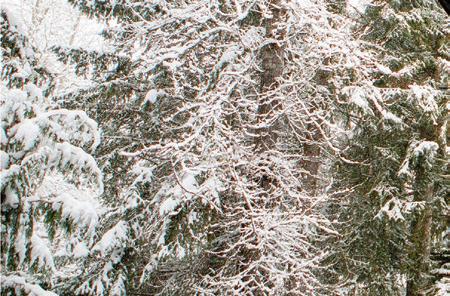
Join the Friends of the Library for fun and games. Bring a friend, play an old favourite or learn a new game, and win prizes! Games available to play include Scrabble, Risk, Sorry, Ticket to Ride, Settlers of Catan, Bananagrams, Pictionary, Trivial Pursuit, Monopoly, Clue, Backgammon, Boggle, the Game of Things and more! Feel free to bring your own game to play.
> Jan. 16, 7 to 9 p.m.
> Whistler Public Library

> Find full details at whistlerlibrary.ca/event/ games-night.

From untold stories, unsung heroes and the faces we’ve come to know and love in climbing, this year
VLFT3 is bringing a collection of eight short films that has something for everyone.



> Jan. 19, 6:30 to 10 p.m.


> Rainbow Theatre

> $20, or $25 at the door; $14 for Core members
> Find more info at verticallifefilmtour.com.

Arts Whistler Live! presents: Comedy Double-header— Julie Kim and Katie-Ellen Humphries, with guest Henok Meresa.
Join this lineup of award-winning comics for a night of sharp wit and hilarious personal anecdotes as they spread happiness, lighten hearts, and unite through laughter.
> Jan. 28, 7:30 p.m.
> Maury Young Arts Centre

> $25
> Find full details at artswhistler.com/live.

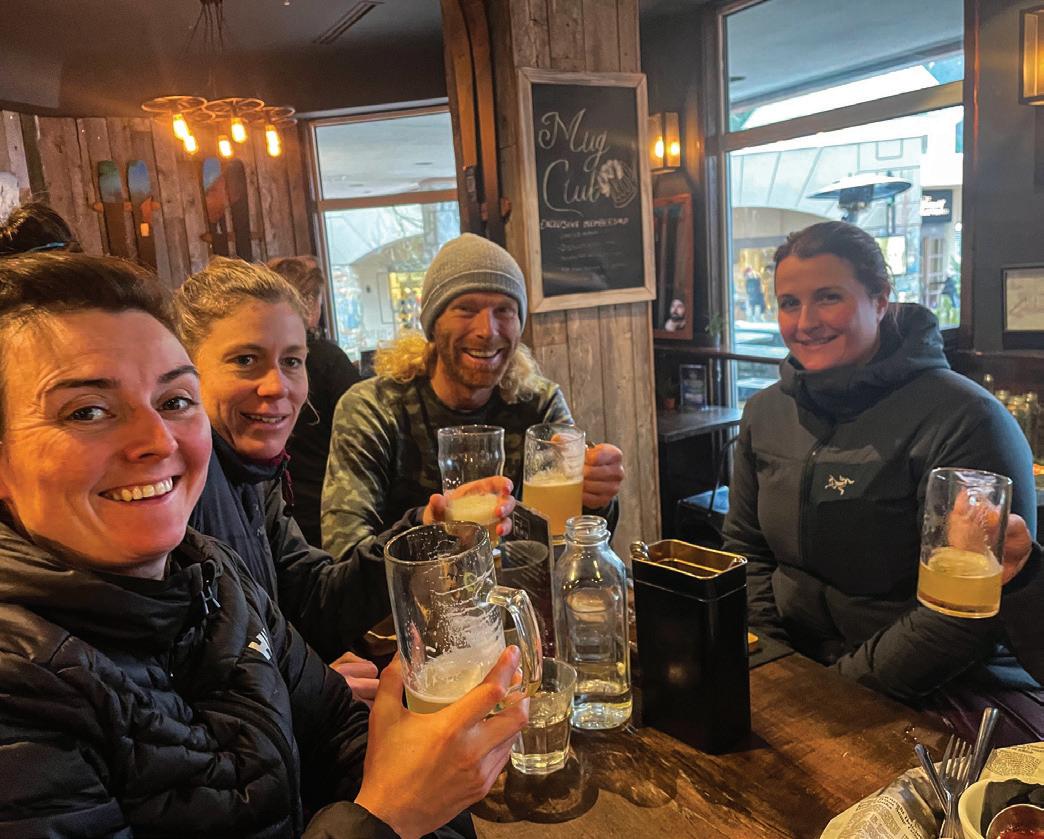
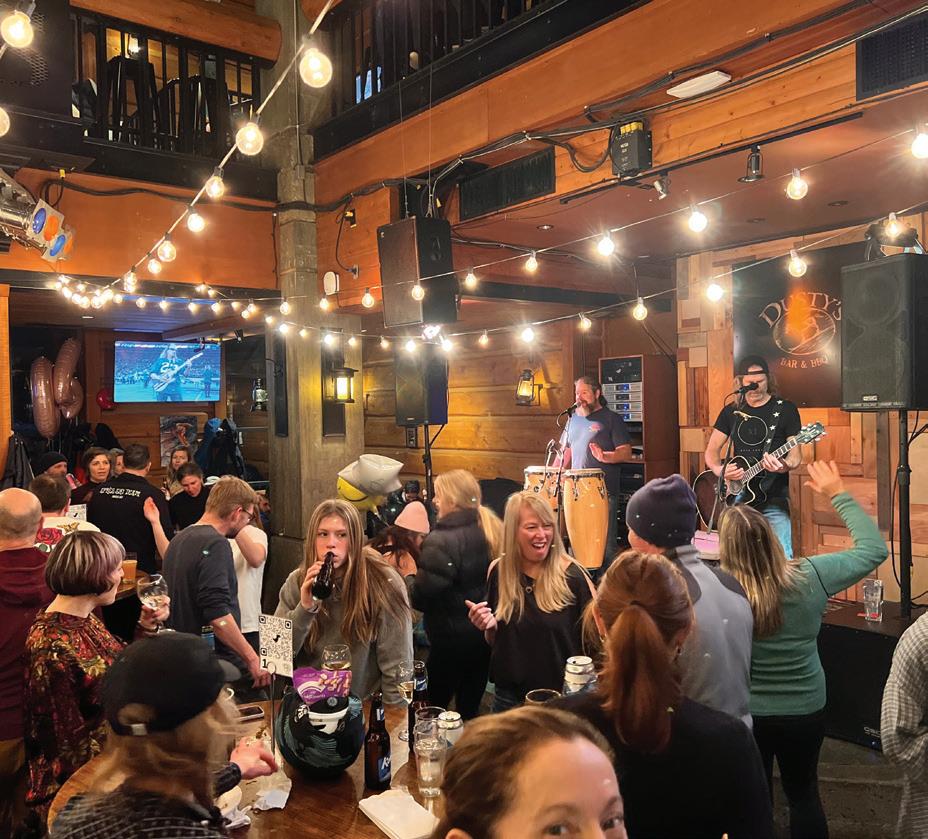





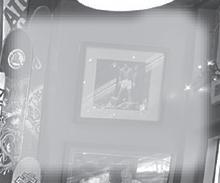


Take
Raise your glass to the fall of Prohibition and enter the golden era of cocktails at an epic party that takes you on a glamorous journey through tipsy traditions Throughout the ballroom designed in 1939 and with more than 800 hours of hand-painted details stations featuring local bar stars and global brand ambassadors will offer drinks representing different eras in cocktail culture past and present
Following the VIP hour, cheer on the finalists in the World Class Canada bartender competition during their speed-round hour before we announce the 2023 Canadian Bart ender of the Year






Then

BEFORE THE SKI RESORT brought power and paved roads to the valley, and it was renamed Whistler, Alta Lake was a relatively small and remote town. Without developed roads it could be hard getting around, and residents from opposite sides of the valley rarely crossed paths. One thing that would bring the community together, however, was the Alta Lake dances. While the music and location of the dances varied over the years, fond memories are recounted by many people who visited or called Alta Lake home.
Fred and Elizabeth Woods lived in Alta Lake with their children from about 1926 until the 1940s, and during this time their family band was the staple entertainment at dances and community events. Dances featuring the Woods family band helped raise money for the first Alta Lake School, which children Helen, Pat, Jack and Kenneth Woods attended. When the one-room schoolhouse was built in the 1930s, it doubled as a community hall where regular dances continued to be held.

Pat Woods was quite young when he started playing at the Alta Lake dances with his family. “We used to load the toboggan with the guitars, accordion, and a violin,” he remembered. “We’d ride the toboggan down to the dance hall, play crib, then make some music. We weren’t very old then, but everybody was up dancing. We were nine or 10.”
School desks were pushed to the side for the dances, and really young children would sleep through the event under the desks. The schoolhouse, like most buildings, was lit by coal oil lamps. When the “home waltz” started and the lamps turned off, it was time to bundle up and head home.
Kenneth Farley’s family came to Alta Lake in 1943 after the Woods family band had moved on. “The music was the wrangler,” recounted Kenneth. “The Philips’ wrangler looked after the horses. He played a fiddle and he would keep the time with the heel of his cowboy boots to set the pace, while the whisky in his back pocket would be sloshing away.
You didn’t need to be able to dance, because it was so crowded you could hardly move.”
For those living along the lake, the festivities started before arriving at the dance. A boat with an outboard motor would begin at the north end of the lake, picking up everyone in rowboats on the way past. By the time they arrived at the dance, there would be a long string of boats pulled along behind the motorboat.
John Burge first came to Alta Lake in 1956, and spent the summers here growing up. Not quite the same as the dances you’ll find at Garf’s or The Longhorn today, he remembers learning the foxtrot, waltz, schottische and polka from Florence Petersen. “We just learned all these dances and people did them. It was a fun time,” he said.
John started working at Rainbow Lodge
when he was about 13, and after working for five summers he had saved enough money to pay for university. One of his jobs was to wax the floors after the Saturday night dances held in the Rainbow Lodge dining room, which could be attended by up to 100 people. By then, Rainbow Lodge was owned by Alec and Audrey Greenwood, who had bought the lodge from Myrtle and Alex Philip when they retired in 1948. The lodge was made of wood and the whole building would dance, with the deteriorating wood floor bouncing up and down as much as six inches as people boogied.
While the music and location of the dances varied over the years, fond memories are recounted by many people who visited or called Alta Lake home.
ARIES (March 21-April 19): Nigerian author Wole Soyinka reworked the ancient Greek play, The Bacchae In one passage, the god Dionysus criticizes King Pentheus, who is supposedly all-powerful. “You are a man of chains,” Dionysus tells him. “You love chains. You breathe chains, talk chains, eat chains, dream chains, think chains. Your world is bound in manacles.” The bad news, Aries, is that many of us have some resemblances to Pentheus. The good news is that the coming months will be a favourable time to shed at least some of your chains. Have fun liberating yourself! Try to help a few others wriggle free from their chains, too. Doing so will aid your own emancipation.

TAURUS (April 20-May 20): The coming weeks will be a great time to fill your journal with more intense ruminations than you have for many moons. If you don’t have a journal, think about starting one. Reveal yourself to yourself, Taurus! Make conscious that which has been vague, unnamed, or hiding. Here are assignments to help launch your flood of intimate self-talk. 1. Write passionately about an experience you’ve always wanted to try but have never done. 2. Conduct imaginary interviews with people who rouse strong feelings in you. 3. Describe what deity, superhero, or animal you are and how your special intelligence works. 4. Visualize a dream in which you appear as a bolder, more confident version of yourself. 5. Talk about a time you felt rousingly alive and how you plan to feel that way again.
GEMINI (May 21-June 20): A stranger approached me at Wild Birds Unlimited, a store that sells bird food and accessories. “You write the horoscopes, right?” she asked. “I’m a Gemini, and I want to thank you for helping me tone down my relentless fidgeting. You made me realize I have been secretly proud of tapping my fingers on the table while talking with people, and constantly darting my eyes around the room to check out the ever-changing views. I’d unconsciously believed that stuff was a sign of my incredible vitality. But you’ve been a steadying influence. You’ve shown me ways to settle down and focus my energy better. I can see how restlessness sometimes saps my energy.” I told the woman, “You’re welcome!” and let her know that 2023 will be a favourable time to do much more of this good work. Homework: Meditate on channeling your incredible vitality into being grounded and centred.
CANCER (June 21-July 22): According to Cancerian author Ronald Sukenick, the writer’s work is “to destroy restrictive viewpoints, notice the unnoticed, speak the unspeakable, shake stale habits, ward off evil, give vent to sorrow, pulverize doctrine, attack and uphold tradition as needed, and make life worth living.” I believe 2023 will be an excellent time for you to carry out those actions, even if you’re not a writer. You will have abundant power to bless and heal through creative rebellion and disruption. You will thrive as you seek out interesting novelty.
LEO (July 23-Aug. 22): Psychotherapist Ryan Howes has wisdom you’ll benefit from heeding in the coming weeks. “We need to accept our age,” he writes. “We need to accept illnesses and addictions. We need to accept the past. We need to accept others as they are.” He goes on to say that this doesn’t mean we must like all these situations. And we can certainly try to make the best of them. But when we don’t struggle in vain to change what’s beyond our control to change, we have more energy for things that we can actually affect.
VIRGO (Aug. 23-Sept. 22): Here’s testimony from musician Pharrell Williams: “If someone asks me what inspires me, I always say, ‘That which is missing.’”
Yes! This is an apt message for you, Virgo. The best way for you to generate motivation and excitement in the coming weeks will be to explore what is lacking, what is invisible, what’s lost or incomplete. Check in with your deep intuition right now. Do you feel a stirring in your gut? It may tell you where to find important and
intriguing things that are missing.

LIBRA (Sept. 23-Oct. 22): “Every animal knows far more than you do,” declares a proverb of the Nimíipuu people, also known as the Nez Perce. Author Russell Banks provides further testimony to convince us we should be humble about our powers of awareness. “There is a wonderful intelligence to the unconscious,” he says. “It’s always smarter than we are.” These are good pointers for you to heed in the coming weeks, Libra. You will have a special power to enhance your understanding of the world by calling on the savvy of animals and your unconscious mind. They will be especially rich sources of wisdom. Seek out their educational input!
SCORPIO (Oct. 23-Nov. 21): Psychologist Carl Jung said that the whole point of Jesus Christ’s story was not that we should become exactly like him. Rather, we should aspire to be our best and highest selves in the same way that he fulfilled his unique mission. So Jesus was not the great exception, but rather the great example. I bring these meditations to your attention, Scorpio, because I believe life in 2023 will conspire to make you, more than ever before, the hero of your own destiny. You will be inspired to honour only your own standards of success and reject all others’. You will clearly see that you are progressing at your own natural and righteous pace, which is why it makes no sense to compare your evolution to anyone else’s.
SAGITTARIUS (Nov. 22-Dec. 21): A reader named Mary Roseberry describes her experience of being a Sagittarius: “I hate to be bored. I hate imperfections. I hate to wait. I hate sadness. I hate conflict. I hate to be wrong. I hate tension.” Wow! I admire Mary’s succinct understanding of who she doesn’t want to be and what she doesn’t like to do. I invite you to compose a similar testimony. You would benefit from getting clear about the experiences you intend to avoid in 2023. Once you have done that, write a list of the interesting feelings and situations you will seek out with intense devotion during the coming months.
CAPRICORN (Dec. 22-Jan. 19): When he was 74 years old, Capricorn author Norman Maclean published his first novel, A River Runs Through It. It became a best-seller. Capricorn film director Takeshi Kitano directed his first film at age 42. Now 75, he has since won many awards for his work in his native Japan. Capricorn activist Melchora Aquino, who was a leader in the Philippines’ fight for independence from Spain, launched her career as a revolutionary when she was in her eighties. She’s known as the “Mother of the Revolution.” I hope these heroes inspire you, dear Capricorn. I believe that 2023 is the year you will get an upgrade in any area of your life where you have seemed to be a late bloomer.
AQUARIUS (Jan. 20-Feb. 18): According to my analysis of the astrological omens, you will soon be called upon to summon grace under pressure; to express magnanimity while being challenged; to prove that your devotion to your high standards is more important than the transitory agendas of your ego. The good news is that you are primed and ready to succeed at these exact assignments. I have confidence in your power to activate the necessary courage and integrity with maximum poise and composure.
PISCES (Feb. 19-March 20): “By dying daily, I have come to be,” wrote poet Theodore Roethke. He didn’t mean he suffered literal deaths. He was referring to the discipline of letting go of the past; shedding worn-out habits; leaving behind theories and attitudes that once served him well but no longer did; killing off parts of himself that were interfering with the arrival of the fresh future. I recommend his strategy to you, Pisces. To the degree that you agree to die daily, you will earn the right to be reborn big-time in a few weeks.
Homework: What power will you possess in nine months that you do not yet have? Newsletter.FreeWillAstrology.com.


In addition to this column, Rob Brezsny creates
In-depth weekly forecasts designed to inspire and uplift you. To buy access, phone 1-888-499-4425. Once you’ve chosen the Block of Time you like, call 1-888-682-8777 to hear Rob’s forecasts. www.freewillastrology.com
In accordance with section 24 of the Community Charter, the Resor t Municipality of Whistler (RMOW) hereby gives notice that: The RMOW intends to provide assistance through par tnering agreements for 2023 in accordance with the Council Policy A-39 - Fee for Service to:
• Whistler Ar ts Council (dba Ar ts Whistler) up to the amount of $550,000 to operate Maury Young Ar ts Centre and develop, produce and promote ar ts programming in Whistler;

• Sea to Sky Invasive Species Council up to the amount of $70,000 to provid e invasive species exper tise, program development, training and education in Whistler;
• Whistler Animals Galore Society up to the amount of $115,000 to operate an animal shelter in Whistler;
• Whistler Museum and Archives Society up to the amount of $208,000 to operate the Whistler Museum; and
• Whistler Off-Road Cycling Association up to the amount of $269,000 to maintain the existing off-road trail network within Whistler (together the FFS Recipients)
On December 6, 2022 Council passed a resolution approving the above-listed funding amounts to the FFS Recipients at a Regular Meeting of Council. All of the FFS Recipients are providing impor tant services to the Whistler community and Council has determined that the assistance being provided by the RMOW fur thers the goals of the Whistler community as identified in Whistler’s Official Community Plan. All funding under these agreements will be paid in 2023 and is dependent on the FFS Recipients satisfying milestones throughout 2023.
Pauline Lysaght
Resor t Municipality of Whistler Corporate Officer
Individual and group Ketamine Assisted Therapy facilitated by a collective of Sea to Sky counsellors, psychiatrists, nurses and doctors
Psilocybin-assisted therapy via Health Canada special access program coming soon
www seatoskypsychedelictherapy com seatoskykat@gmail com






















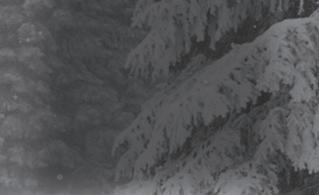

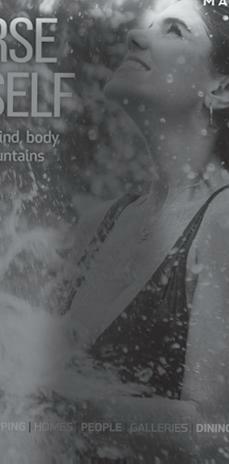




















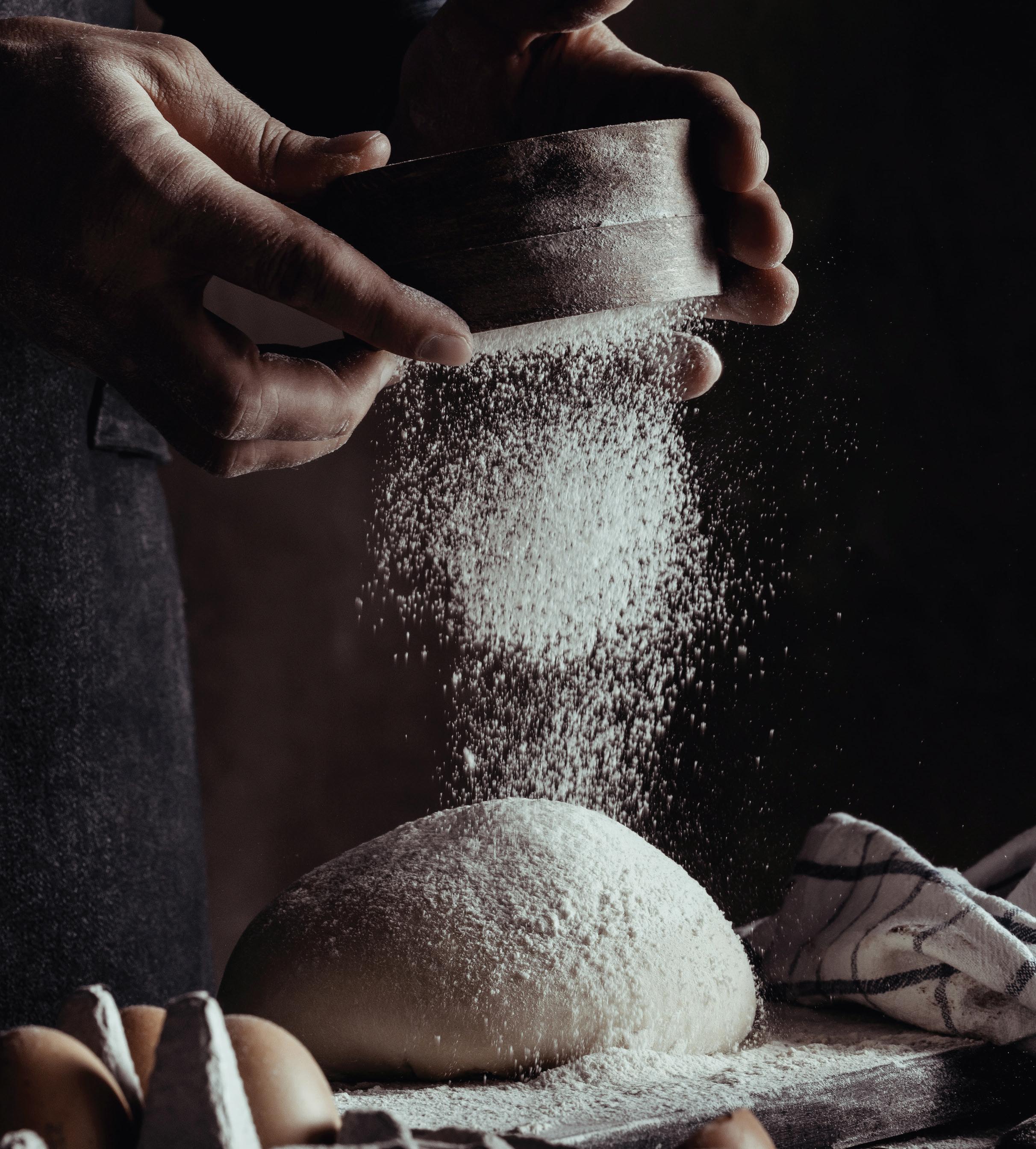



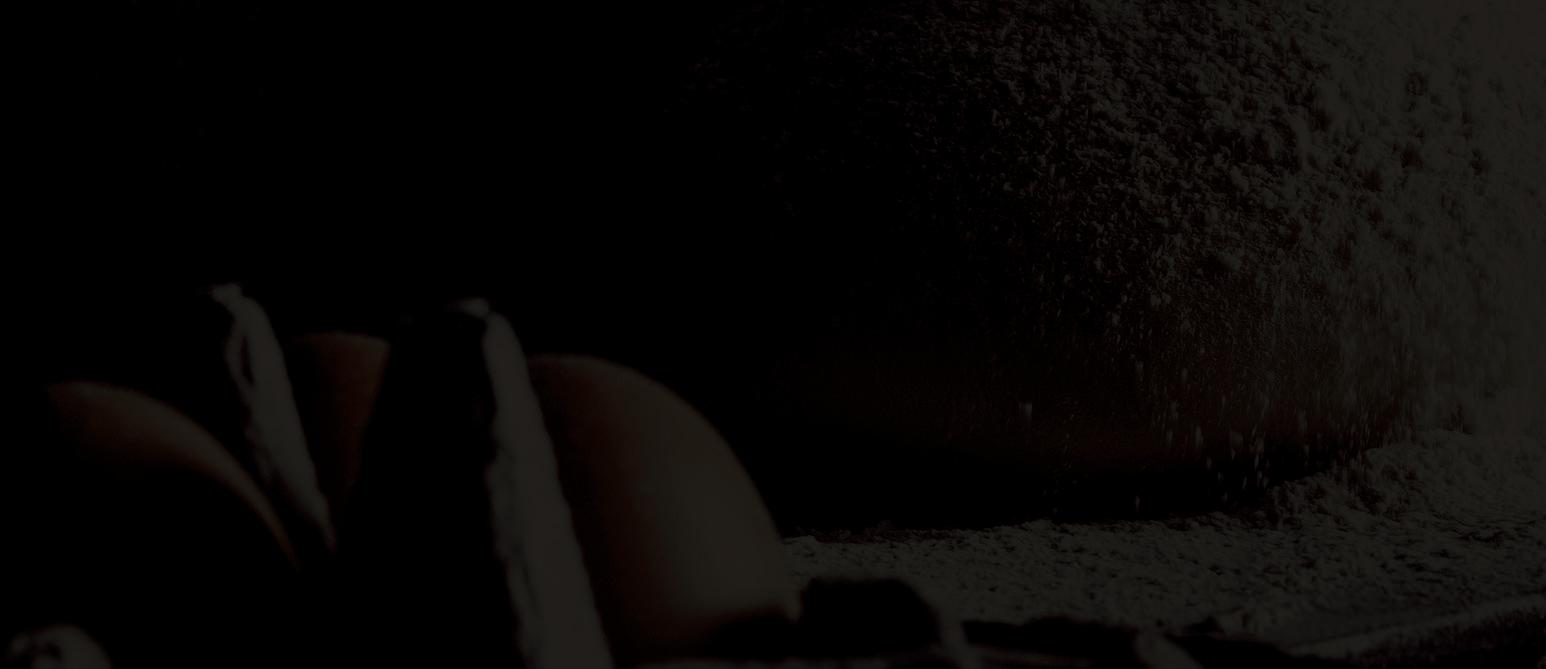
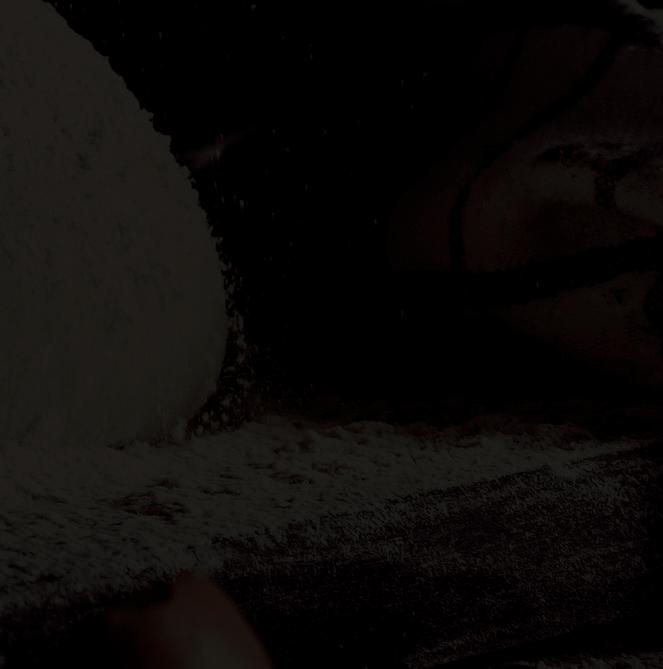


Join a Dynamic Team of Art Lovers!


Please drop off your resume at the hotel or email : athalakada@pinnaclehotels.ca
Marketing Manager


The Museum is currently seeking: Responsible for the development, oversight, and implementation of all marketing and communications efforts of the Audain Art Museum including advertising, social media, media relations and audience development.
Competitive salary and benefit program.
Application deadline January 27, 2023. For complete job description and to apply visit audainartmuseum.com/employment




PLEA Community Services is currently seeking a Casual Hourly Intensive Support & Supervision Program (ISSP) Worker for our Vancouver Coastal Youth Services team. The proposed start date for this position is January 23, 2023. This position requires BCGEU membership.

The ISSP is a community-based one-to-one service for youth who are deemed to be medium to high risk of re-offending – it is an alternative to custody. The ISSP worker is responsible for providing these youths with intensive supervision, and to support their participation in activities and programs in the community that will facilitate their rehabilitation and integration – which are complemented by the case management and supervision provided by the probation officer; also monitors compliance with the terms and conditions of court orders. The incumbent will provide ISSP services in the Sea to Sky Corridor, including Whistler, Mt. Currie/Pemberton, and D’Arcy regions. The ISSP Worker will meet with youth based on the current need of the program and at the request of referring Youth Probation Officers. Applicants with demonstrable cultural connections and community knowledge considered an asset.
Please submit a resume and cover letter referencing the competition number 2022105ISSP1.R. Closing date for Internal Applications: Friday, January 13, 2023, at 4:30PM. If the position is not filled internally, it will remain open until filled.
To

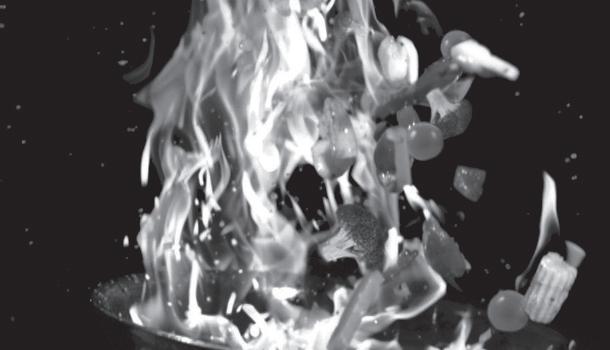
At the Liquor Distribution Branch (LDB) our vision of ‘Service. Relationships. Results.’ is all about providing a valued service, building strong relationships with our stakeholders, and achieving greater results for the province.
The LDB is one of two branches of government responsible for the cannabis and liquor industry of B.C. We operate the wholesale distribution of beverage alcohol within the province, as well as the household retail brand of BC Liquor Stores.
We employ nearly 5,000 people in over 200 communities and have been named one of BC’s Top Employers 14 times over for offering exceptional places to work rooted in values of fairness and respect, work-life balance, and inclusion and diversity. We believe that our people are our greatest asset. Being a reputable employer with programs of skills training and professional development are what attract candidates to BC Liquor Stores, while our progressive, forward-thinking culture is why employees with a growth mindset thrive.
Auxiliary positions are on-call, meaning hours of work are not guaranteed and subject to availability. Some auxiliary employees may not initially work a full 35-hour week, but with more hours worked and more seniority gained, more opportunities for more hours of work will follow.
Auxiliary positions are not permanent full-time but can lead to permanent full-time opportunities with a very competitive total compensation package, including a comprehensive pension plan, medical and dental coverage (including massage and physiotherapy), tuition reimbursement and scholarship programs, and access to public service employee benefits including career support services, financial and legal services, and employee and family counselling.
We are dedicated to the highest quality of customer service, delivered with friendliness, individual pride, initiative, and retail passion! If you fit this description and you are prepared to work in a fast-paced environment, we encourage you to apply to become a part of the Whistler area BC Liquor Stores.
To be eligible, applicants must meet the following qualification requirements:
• Be at least 19 years of age
• Be able to legally work in Canada
• Be able to provide excellent customer service
• Be able to communicate effectively and professionally with the public
• Be able to demonstrate aptitude for cashier and related duties, including calculations
• Be able to perform physically demanding work, including lifting 20-25 kg boxes
• Have a valid Serving It Right Certificate™

• A Criminal Record Check is required.
BC Liquor Store Sales Associates may be required to operate a variety of mechanical and hand-operated equipment, in addition to handling large volumes of bottles as part of the LDB’s recycling program.

Rate of Pay as of April 10, 2022: Auxiliary Sales Associate - $20.33 per hour Seasonal Sales Associate - $18.92 per hour


For exciting and challenging retail opportunities, please apply online at: http://bcliquorstores.prevueaps.ca/pages/openings/ Or apply in person at: Whistler Marketplace 101-4360 Lorimer Rd, Whistler
On November 1, 2021 the BC Public Service announced the COVID-19 Vaccination Policy that defines the conditions and expectations for BC Public Service employees regarding vaccination against COVID-19. Among other possible measures, proof of vaccination will be required. It is a term of acceptance of employment that you agree to comply with all vaccination requirements that apply to the public service. More information can be found here: https://www2.gov.bc.ca/ gov/content/careers-myhr/all-employees/safety-health-well-being/health/covid-19/covid-19vaccination-policy-for-bc-public-service-employees
We have a rare opportunity to work at one of Canada’s best-read online newsmedia companies, Glacier Media.
You will be part of the Pique Newsmagazine team, a division of Glacier Media. In your role you will consult with local businesses to offer cutting edge marketing solutions: programmatic, social media, SEO, sponsored content and community display advertising on our website and yes, we still reach customers through our trusted newspaper as well.
• You are comfortable making cold calls and setting up/leading meetings with new and existing clients.
• A self-starter with a consultative selling approach working with clients planning both digital and print advertising campaigns.

• Building and maintaining client relationships with your exceptional communication skills comes easy to you.
• You are a goal orientated individual with a positive attitude and a willingness to learn.
• You possess strong organizational skills and have the ability to multitask in a fast-paced environment.

• Competitive salary + uncapped commission package.
• Comprehensive / competitive group health and welfare benefits
• Extensive onboarding training and ongoing support.
Whistler has a worldwide reputation for outdoor recreation and boasts a vibrant village featuring restaurants, bars, retail and more. While this legendary resort is an international mountain sports mecca, it is also a down-to-earth mountain town, where community and culture have forged a unique environment. This opportunity offers you the chance to call a world-class ski hill you own—and if you are a local, well you know you’re in the right place to forge a career and lucky to call Whistler your home.
To apply, please submit your cover letter and resume in confidence to Susan Hutchinson, shutchinson@wplpmedia.com
Closing date: Open until filled.
Location: Ullus Community Complex, Mount Currie, BC
Status: Permanent, Full Time Reporting to: Chief Administrative Officer Salary: $93,475.20 - $101,556
The Director of Lands & Resources is responsible for the overall operations of the Lil’wat Nation Lands and Resources Department including the assertion and protection of Lil’wat Nation rights, title and interests throughout Lil’wat traditional territory. The Department has 8 full time staff plus seasonal on-call field workers. Its role includes engaging with the private section and governing agencies on land use matters, conducting fisheries, environmental, and archaeological field work, managing Lil’wat cultural data and GIS, implementing on-reserve land use policies. The Director will be expected to be proactive and supportive of all Lil’wat Nation lands policies and strategies and work closely with the Chief Administrative Officer and Chiefs and Council regarding territory land use matters.


For
Location: Mount Currie
Status: Full Time – Regular Reporting to: Chief Administrative Officer Salary: $110,000 - $130,000 annually
The General Manager of Lil’wat Services is responsible for the overall oversight of five Lil’wat departments: Lil’wat Health and Healing, Lil’wat Community Social Services, Ts’zil, Language and Culture, Community Programs and Community Development. The GM is responsible for working with Department Directors to maximize the amount and quality of services to Lil’wat citizens. This includes providing leadership, financial management, programming and strategy development and execution.
For more information, or to apply for this position please visit our careers page lilwatnation.easyapply.co or email HR@lilwat.ca
ARE





YOU A

Come be a part of our awesome team as The Squamish Chief’s new Media Account Manager.


If you don’t already live in Squamish, you should know it’s one of the most innovative and attractive communities on the West Coast just a short commute from the North Shore of Vancouver. It has a growing worldwide reputation for outdoor recreation with world-class mountain biking, rock climbing, water sports and skiing, boarding and the backcountry in the winter. We’re youthful, engaged and passionate about where we live!
And if you’re a local – well, you know you’re in the right place to forge a career and lucky to call Squamish home.
We’ve got an opportunity to work and truly be a part of this inspired community at its media hub, The Squamish Chief. We’re part of Glacier Media Group and Local News Network, the largest local digital network in Canada. We work with our clients to offer cutting edge solutions like programmatic, Social, SEO, sponsored content and community display advertising on our website – and yes, we reach customers through our trusted newspaper as well. We’ve got media opportunities covered.
• You have sales experience and are comfortable making cold calls and setting up/ leading meetings with new and existing clients.

• A self-starter with a consultative selling approach working with clients planning both digital and print advertising campaigns.
• Building and maintaining client relationships with your exceptional communication skills comes easy to you.
• You are a goal orientated individual with a positive attitude and a willingness to learn.
• You possess strong organizational skills and have the ability to multitask in a fast paced environment.
• Competitive salary + uncapped commission package.
• Comprehensive health and dental coverage and extended benefits.
• Extensive onboarding training and ongoing support.



Please submit your cover letter and resume in confidence to: Cathie Greenlees cgreenlees@squamishchief.com
Journeyman



If you thrive in a fast paced, busy and diverse environment with lots of autonomy then this could be the position for you. If you like variety in your work experience, are responsible and would like the opportunity to advance your career, Please send your resumé in confidence to: e. info@sparkelectrical.com

Whistler’s only dedicated wedding magazine.
AVAILABLE ON STANDS IN THE SEA TO SKY




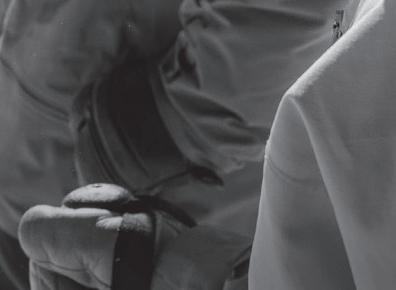




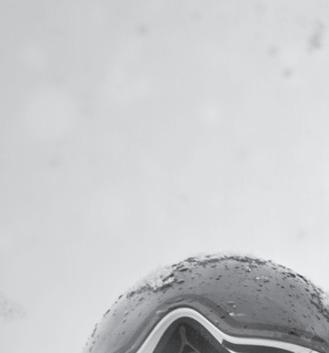









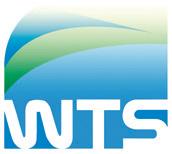
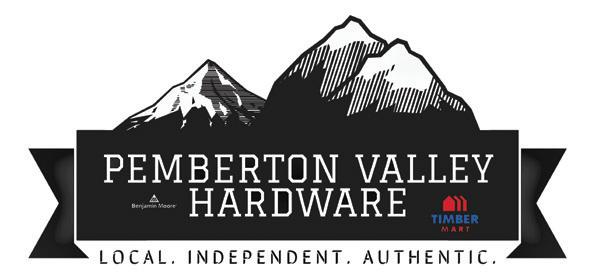






Smug smile
Proceed
Walk and trot
Is not well
Winnings
Jr.’s son, maybe
Dress style (hyph.)
Type of duck
“The Black Tulip” author
Soda bottle size
Sweater letter
“Oh, shut up!” (2 wds.)
Storm warning
Three-legged stand
Glasses, slangily
Comedian -- Chase
Measuring instrument
Grace enders
Arial or Helvetica





Nature walk
Moved out
First name in whodunits
Sponge features
Spanish gold
Incline
Jackpot games
Makes glad
Own up
Pull apart by force
Type of tide
Waning
Herbal infusion
City near Syracuse
Old hat
Hairpin curves
Mantra chanters
Imitating
Cranium
“Yikes!”
Verdi output
Cause, as havoc
Sweetie-pie
Coast Guard off.
Face-to-face exams
Council that rules after a coup
Homer classic
Lie -- (in hiding)
Copenhagen residents
Meandered
Inquire about
Visit often
Came to be
Small amount
Radiates
Garden green
Acrobatic moves
Quays
“Peer Gynt” playwright
Low poker pair
Ventures
Let use
Not a soul (2 wds.)
Round abodes
Postpone 80 Oust
Tankard
Truck, in London
Wedding cake layers
ower
Young horses
Dagwood’s pooch
Printer need
Morn’s counterpart
Regular routines
Catch re
Circumvent
Shoulder muscles
Kindergarten lesson
Curved lines
Go it alone
Hot time in Quebec
Meyers of “Kate & Allie”
A FAMILY GATHERING over the weekend saw me driving south to Vancouver at about 9:30 last Saturday morning. Northbound traffic was bumper to bumper from the village to Alta Vista. There was a short gap, compliments of a red light at Creekside, then bumper to bumper with other short open spaces due to the other traffic lights.
But from Function Junction to the bottom of power line hill there were no gaps, just nose-to-tail vehicles crawling along at walking speed or stopped completely, backed
BY G.D. MAXWELLup by the Function traffic lights as a couple of cars turned left into Cheakamus and a couple turned north out of Function.
It was the kind of traffic I would have expected on a Saturday or Sunday when the conditions were great for skiing and boarding. But the weather last Saturday was far from perfect—wet, socked in, Wet Coast cementitious powder.
Coming back Sunday, between 5 and 5:30 p.m., southbound traffic was continuous from Squamish to North Vancouver and even heavier from Whistler to Squamish. The endless stream of headlights glaring off rainsoaked, boundary line-challenged Highway 99 left me laughing at the idea of autonomous cars trying to negotiate what their cameras and radar couldn’t possibly “see.”
It also had me thinking about Whistler’s Climate Action Big Moves Strategy. The goal of the BMs is to reduce Whistler’s greenhouse gas emissions to meet the target of a 50-percent GHG reduction below 2007 levels by 2030. I’m not interested in the debate about how insignificant Whistler’s and Canada’s GHG emissions might be on a global scale. If that’s the kind of palaver that makes you feel good about driving a big truck or hopping on airplanes to work on your tan or fill your Instagram, go for it.
But to the extent the Resort Municipality of Whistler (RMOW) is serious about the BMs, I would like to explore some possible steps that would further the big movements.
On a What Have You Done About It Lately note, the RMOW would like us to move beyond cars, which is to say make half of all local trips by transit or “active” transport— bikes, walking, etc.—by 2030.

To encourage this transition, several steps have been identified: affordable fares, shorter trip times, dedicated bus lanes, and improved accessibility among them.
The most important of those, and the one we’ve seen no progress on, is dedicated bus lanes. Ironically, it’s also arguably the most important. Why? Because no one who has the choice is going to choose sitting on a bus stuck in gridlock as opposed to sitting in their own car stuck in gridlock.
An item completely missing from the list
is end-of-trip facilities. This used to be a key consideration in the planning department. When the library was being rebuilt, a shower/ change facility was added to the design and expense. The idea was to encourage people to bike in and clean up. To my knowledge, it’s never been used for that purpose and I’m not arguing for showers.
But the single best incentive to get people onto transit who are heading to the mountains to ski and board would be more equipment storage at the bases of Whistler
to change that calculus, and quite possibly the incentives are instrumental in keeping prices high.
The third BM is the money shot: reduce visitor travel emissions. Gratefully, this one acknowledges, “Emissions associated with tourist travel to and from Whistler are estimated significantly higher than Whistler’s total community emissions.”
I’m pretty certain the emissions I saw Saturday morning would be the equivalent of everyone in town letting their cars idle in
The only thing low-carbon about Whistler as a vacation destination is the pedestrian village. Other than that, Whistler is a poster child for high-carbon vacations. And no amount of carbon offsets—another initiative— is going to change that, such legerdemain often being compared to an obese person paying someone else to diet for them.
Clearly the vast majority of the GHG emissions stem from day-tripper traffic from the Lower Mainland. Destination tourists fly in, and some rent cars to drive up. But many take a shuttle, since they’ve read or know there’s no need for a car once you get here if you’re staying in the village.
The 800-pound—sounds more daunting than a 362.9-kilo—gorilla to tackle with this BM is day-trippers. So what’s the key initiative? “Partner with resort organizations and regional partners to encourage alternatives to personal vehicles travelling to and within Whistler, for example through marketing and communication.”
and Blackcomb. Schlepping all your gear onto and off the bus to go skiing is a non-starter for many people, and for virtually all people with kids in tow. It used to be slightly less onerous when there were tubes on the side of the bus for skis, but fat skis pretty much killed that option. Considering the number of short trips in cars made each winter’s day by skiers and boarders, it seems making it easier to opt for transit would be considered low-hanging fruit.
The BM to decarbonize transportation seems to hinge on all of us buying electric vehicles. This, of course, is going to hinge on EVs becoming both available and affordable. All the incentives in the world aren’t going
the driveway all day. And that was just one Saturday’s worth of personal and commercial cars and trucks coming one way.
So what are the key initiatives to counteract this cloud of emissions? In a word, ineffective. And in some cases laughable.
Any mention of dedicated bus lanes? No. Any mention of satellite parking south of town to intercept some of those hundreds of cars? No. Any mention of higher rates for the day skier parking lots that already charge a fraction of what it costs to park in Vancouver? No.

But we’re somehow going to “show leadership in marketing a low-carbon vacation destination.” I’m not making that up.
Marketing and communication? Show of hands: Anyone, other than whomever wrote this, who thinks marketing and communication is going to stem the tide of vehicles coming up and going back each day, raise your hand. I’ll wait. Still waiting. Oh, there’s a hand. No, just scratching his head.
Don’t get me wrong. I want people to come here. I want them to have a good time. Sitting in gridlock from the bottom of power line hill to the village isn’t a good time. Leaving your car at the Callaghan and sitting in a shuttle bus in a dedicated lane whizzing past the diehards who insist on driving and paying $60 or more a day to park is a much better time.
So why isn’t solving this a key initiative? ■
Sitting in gridlock from the bottom of power line hill to the village isn’t a good time.



